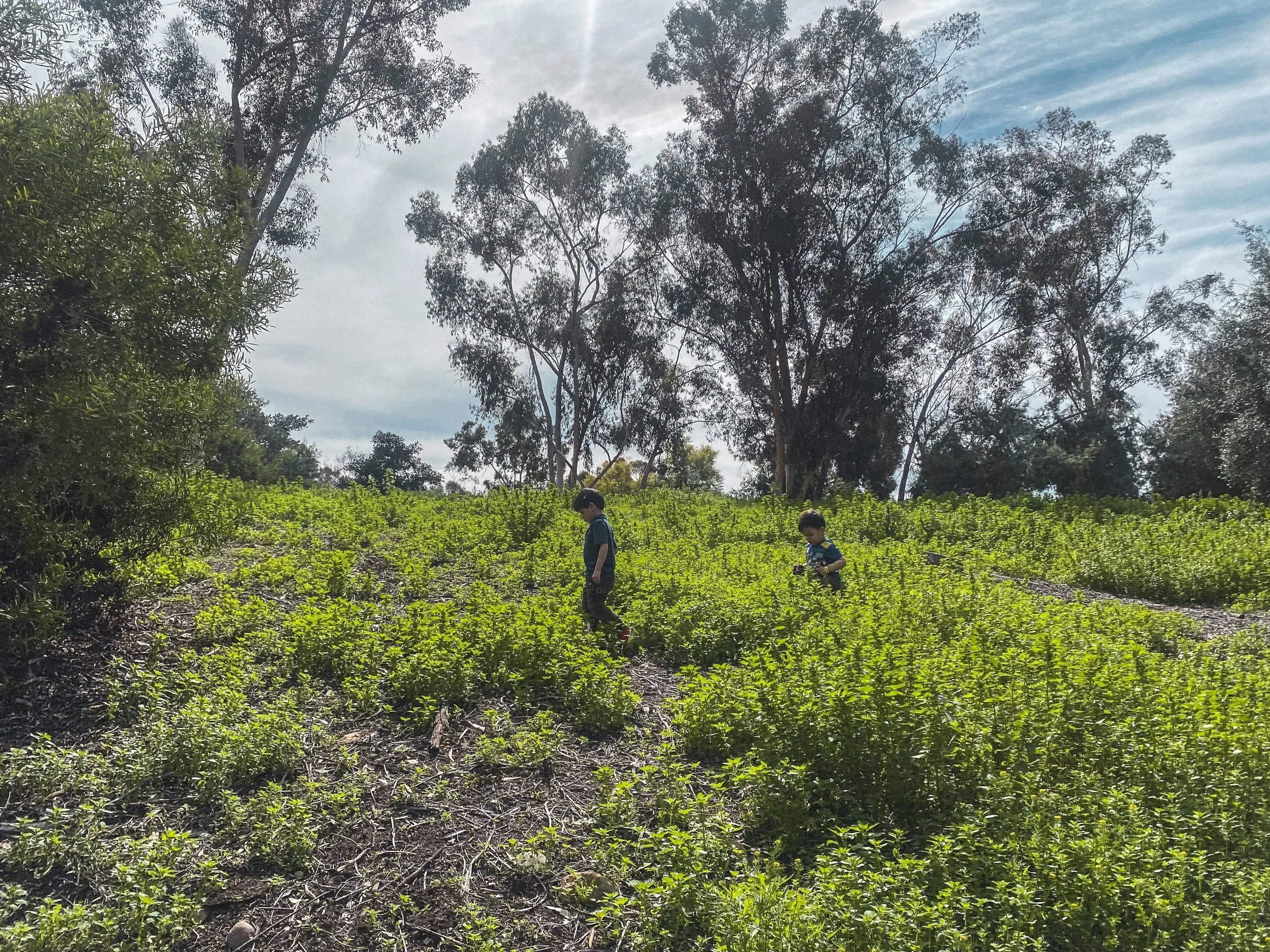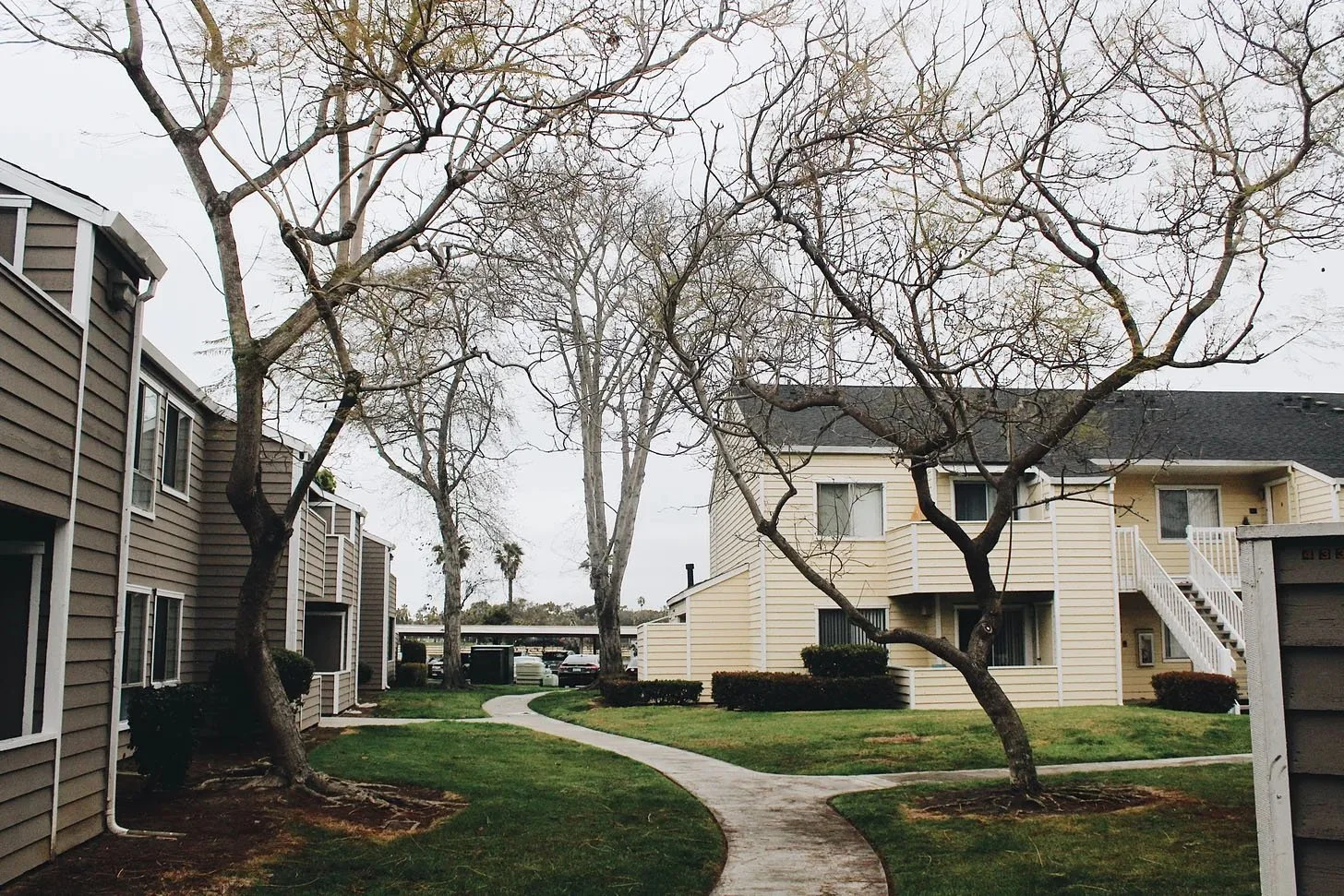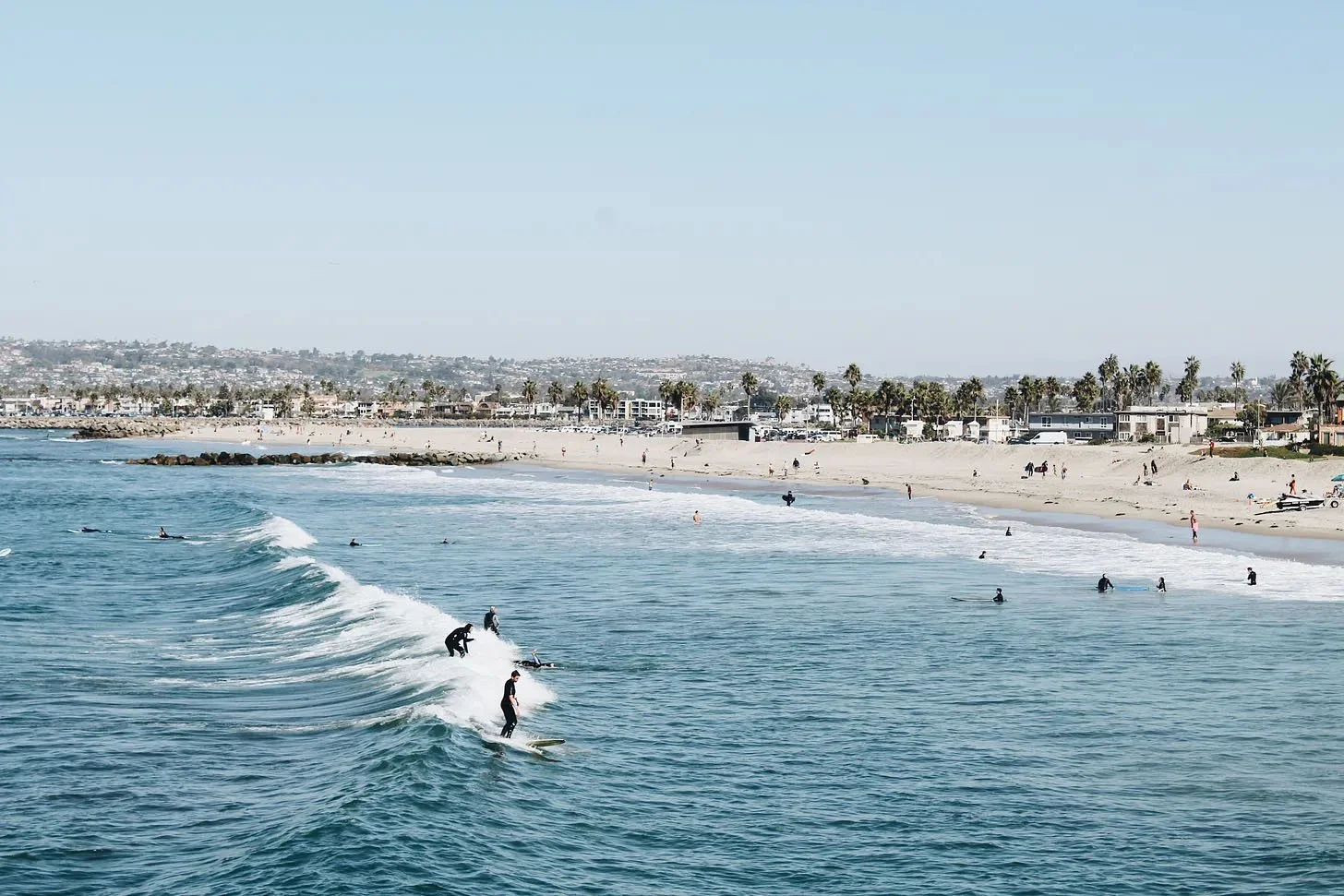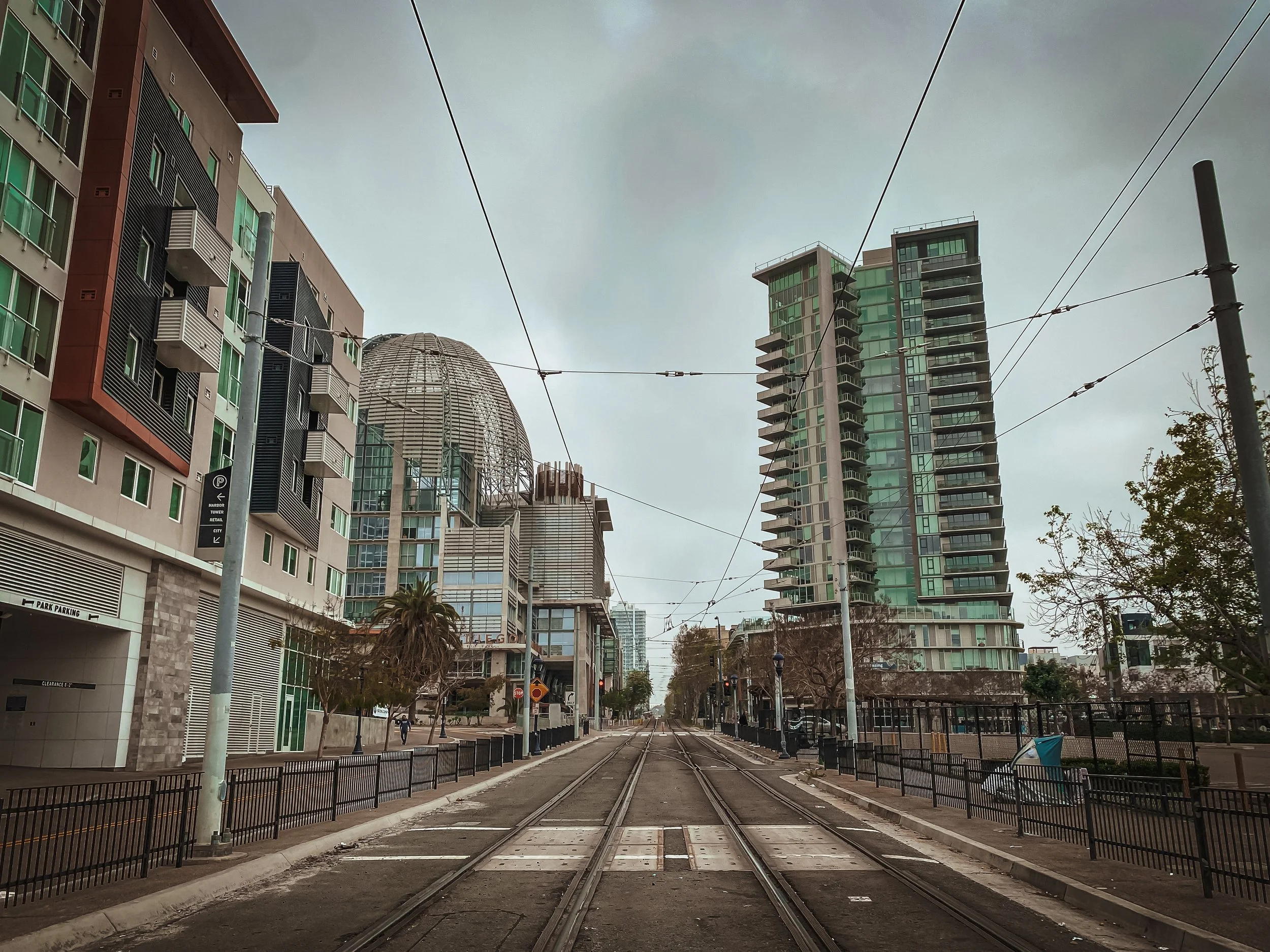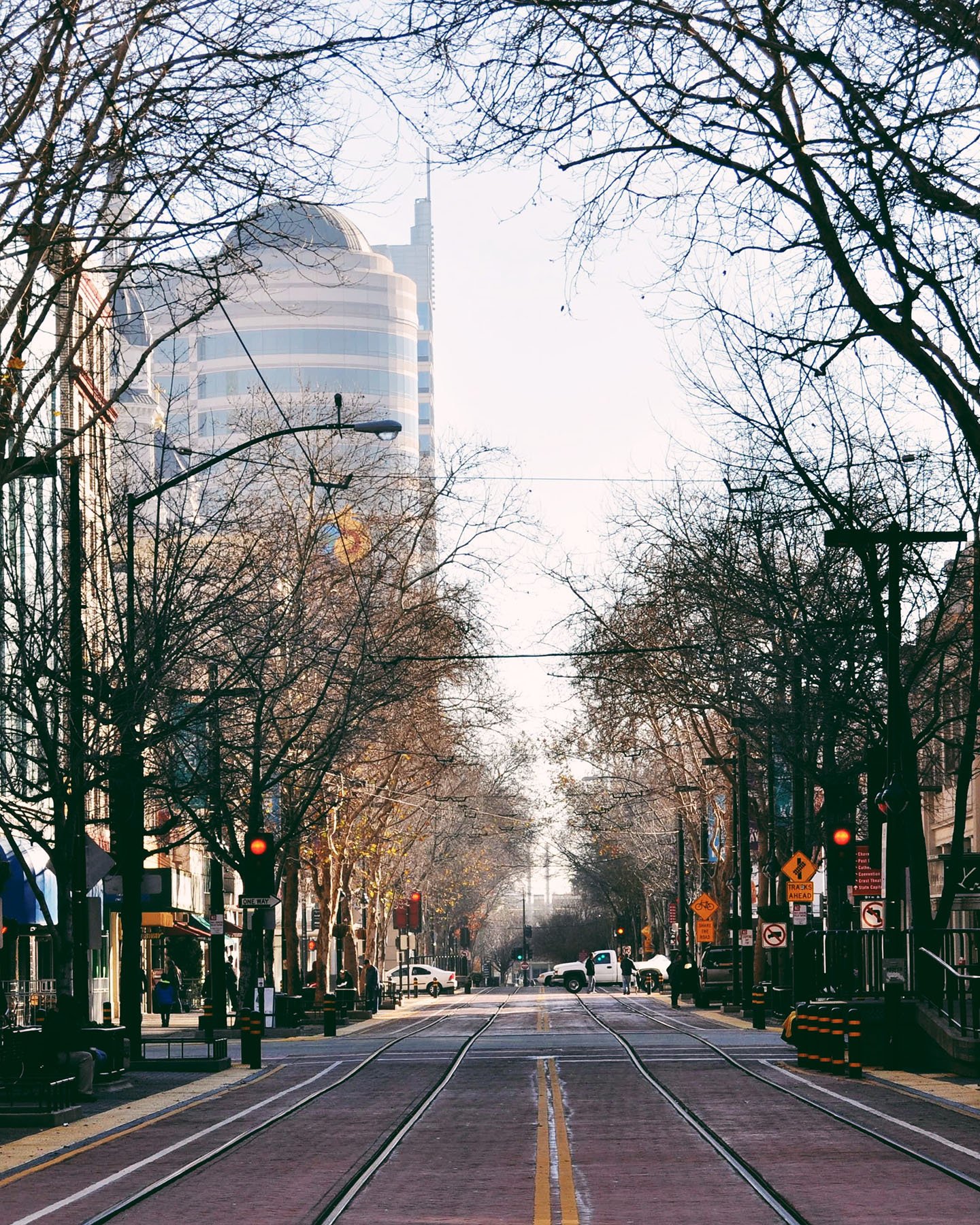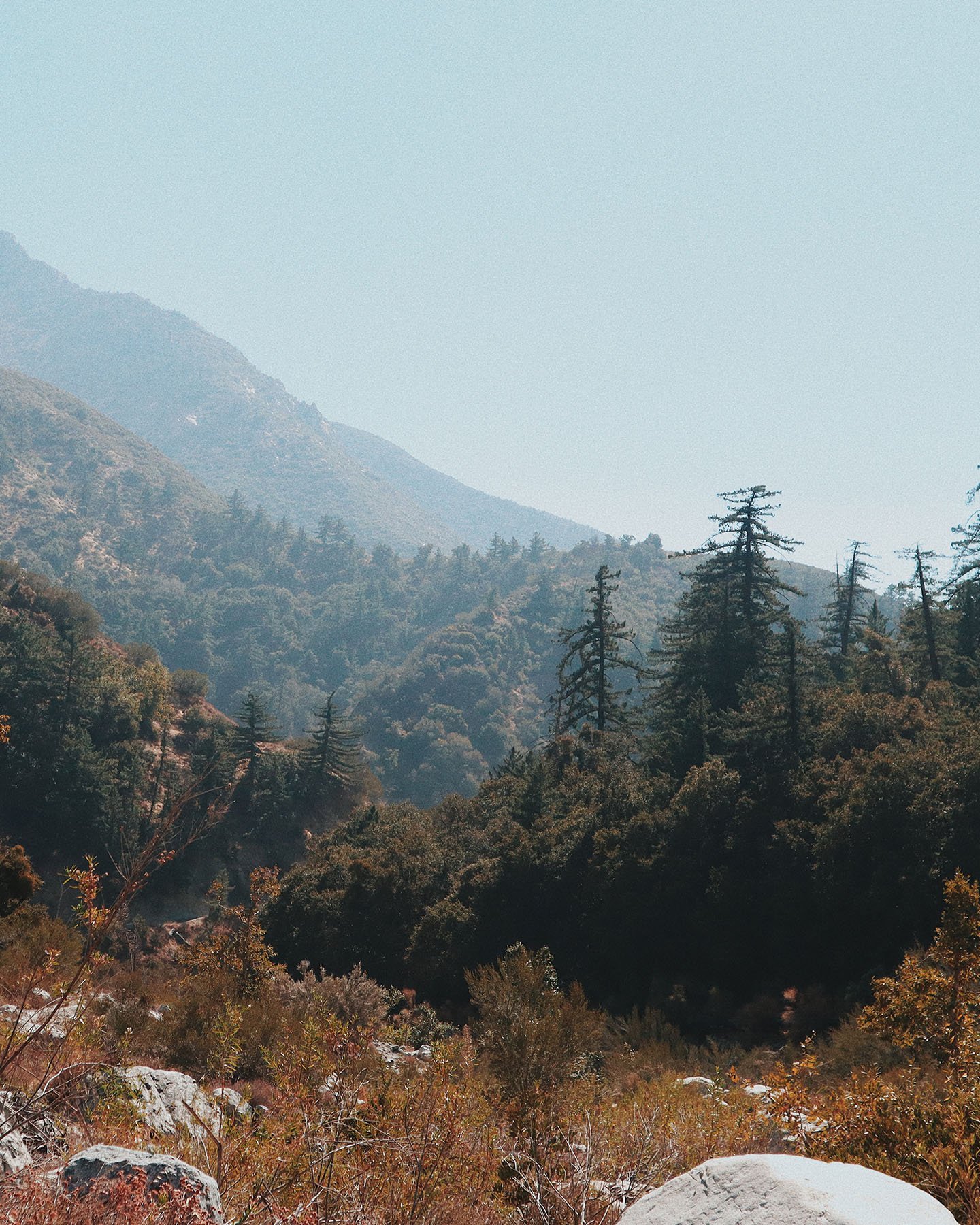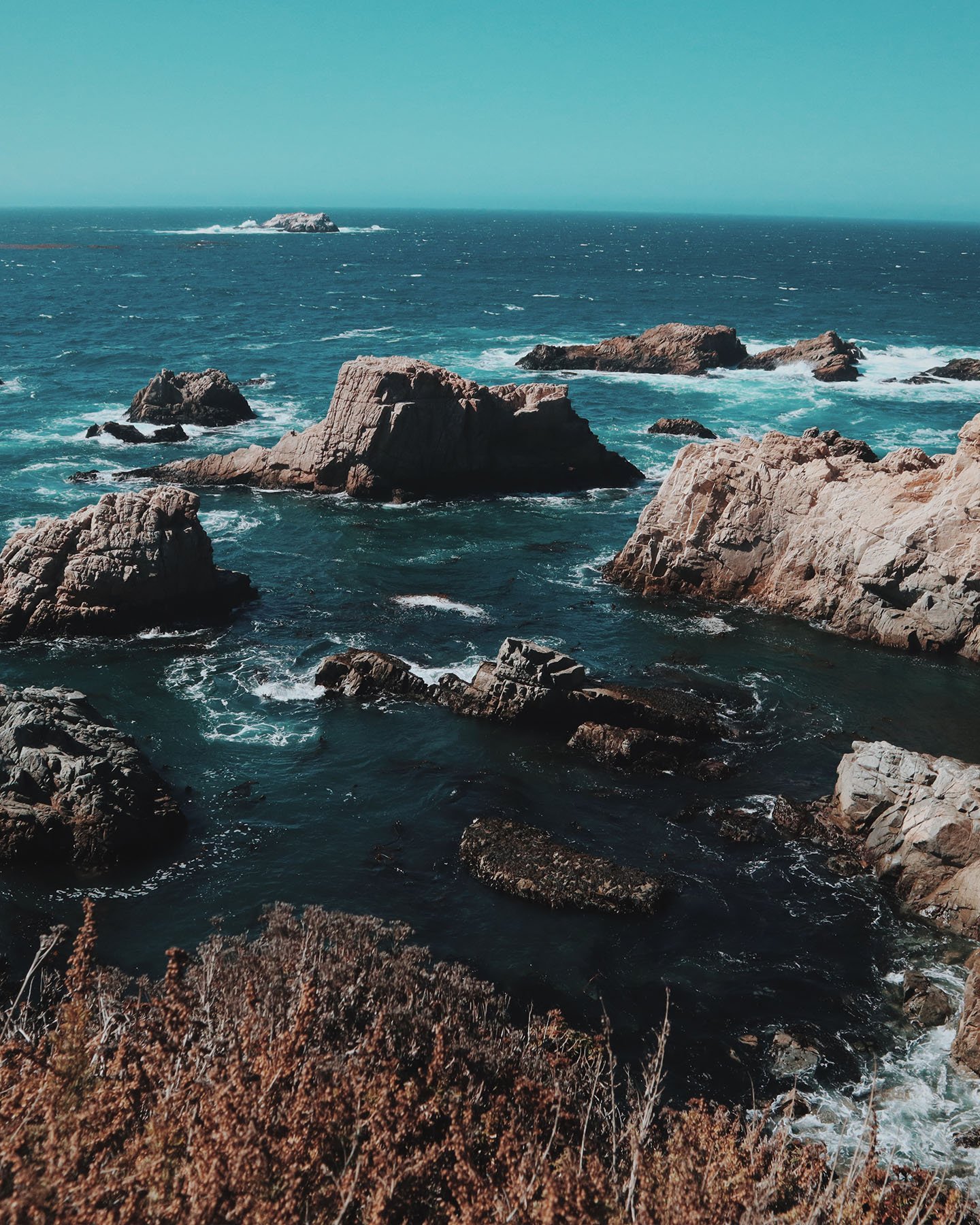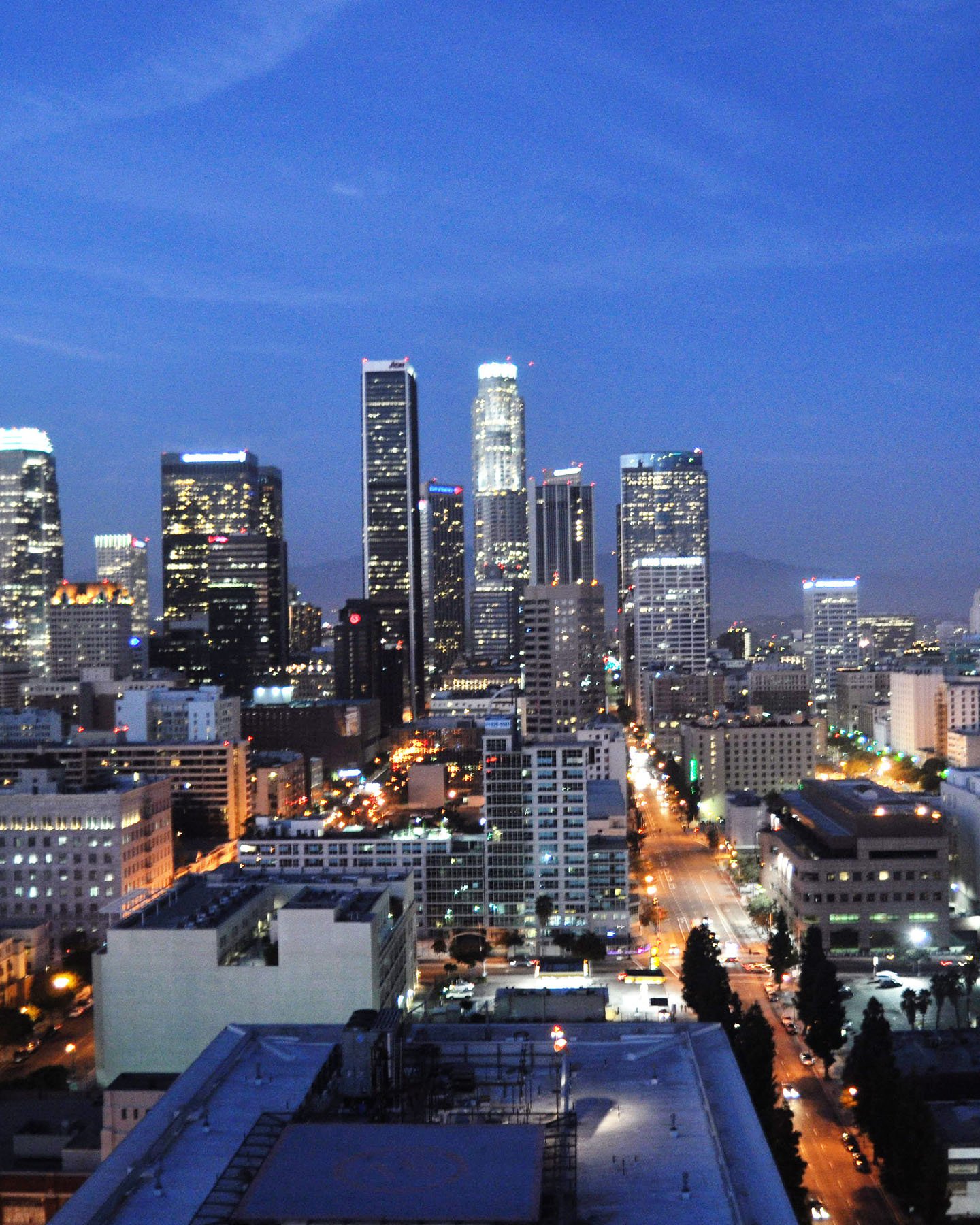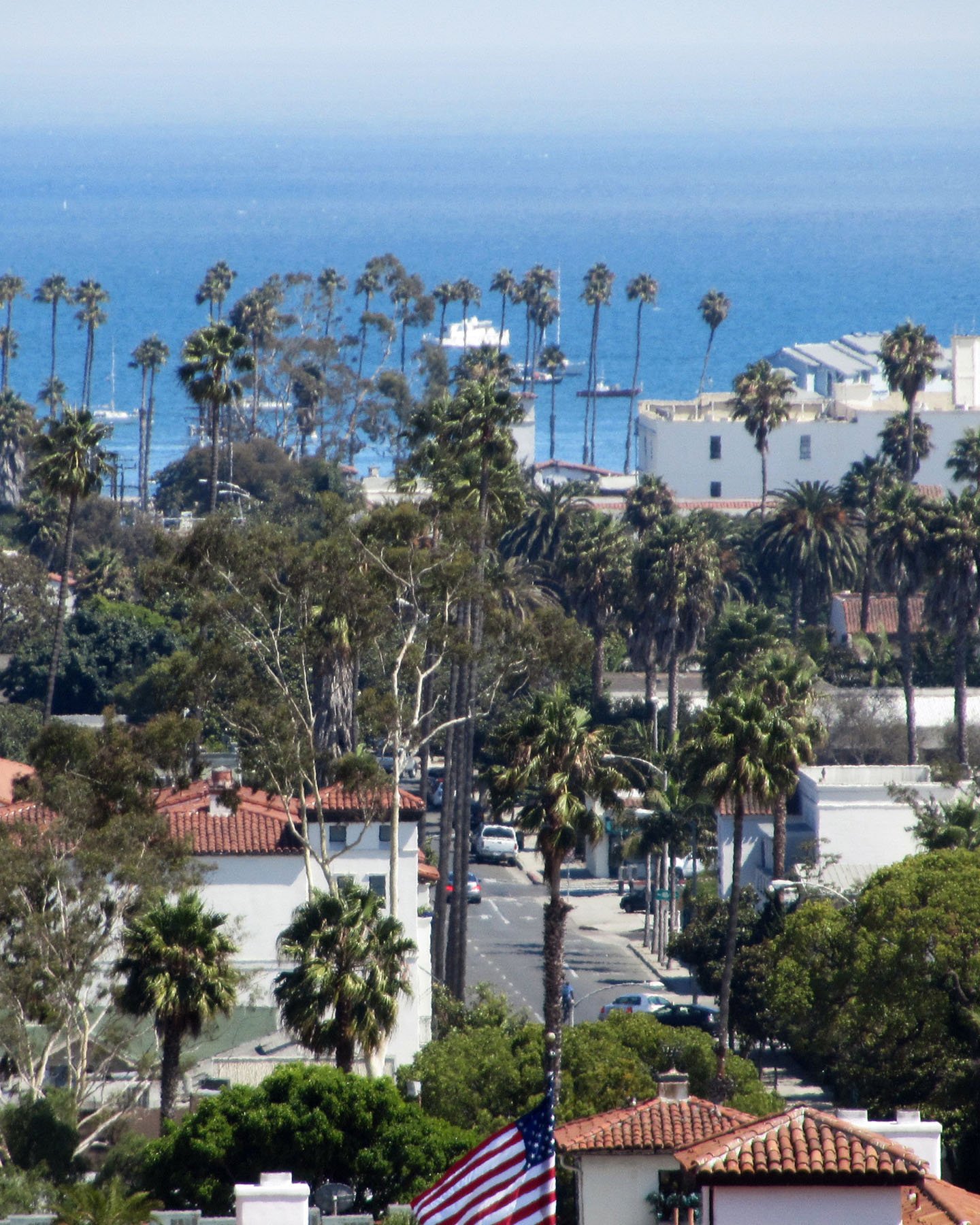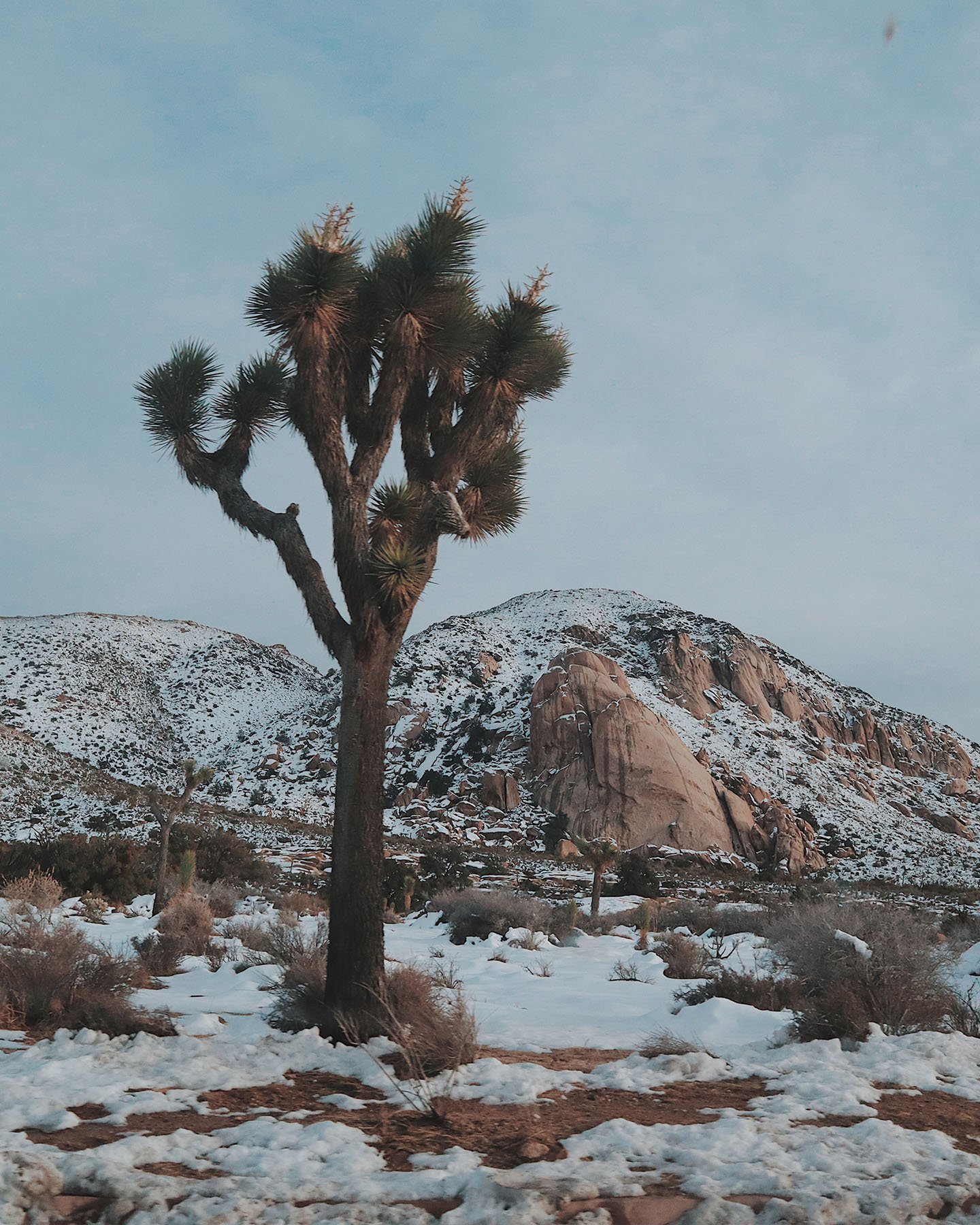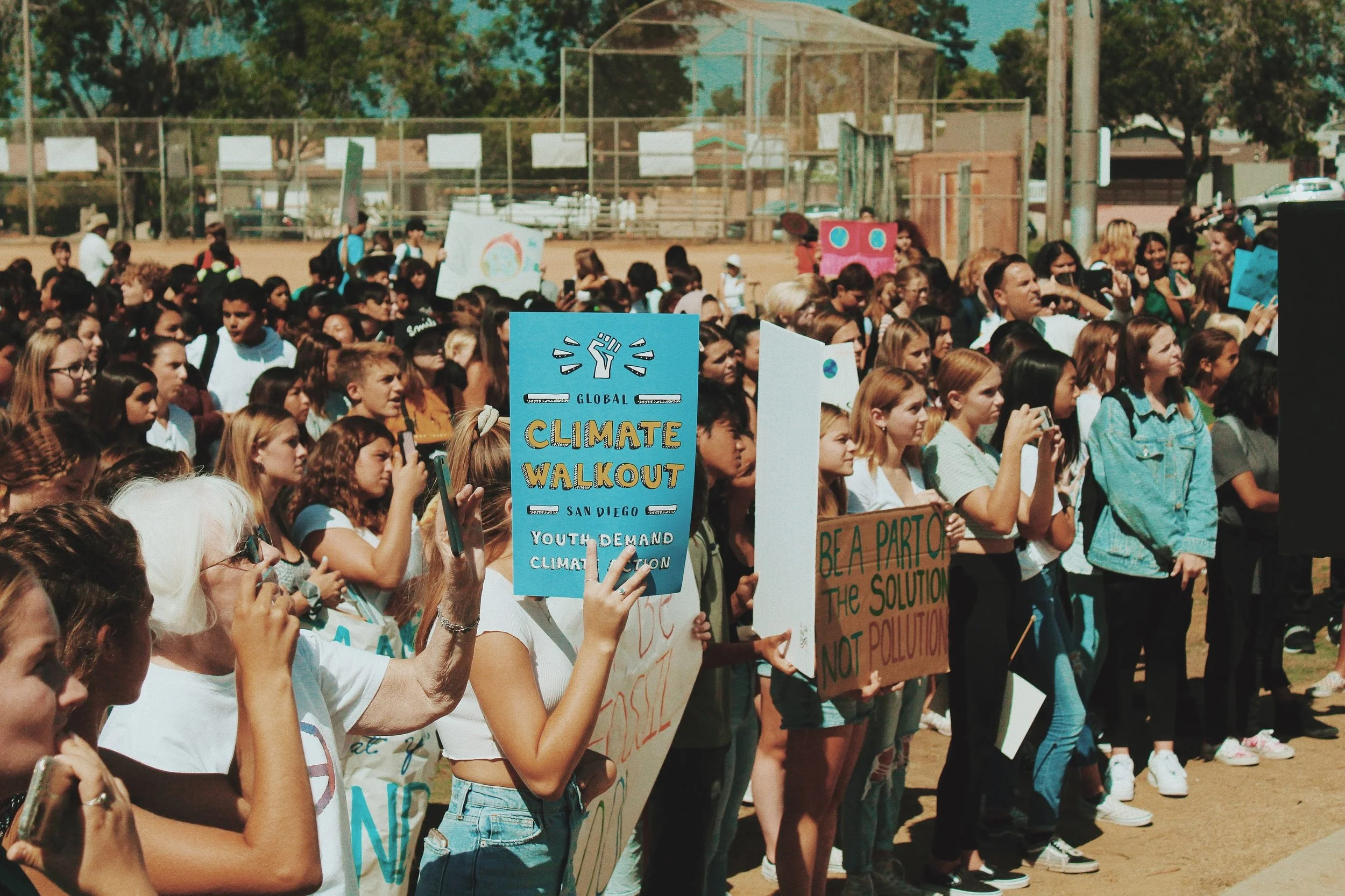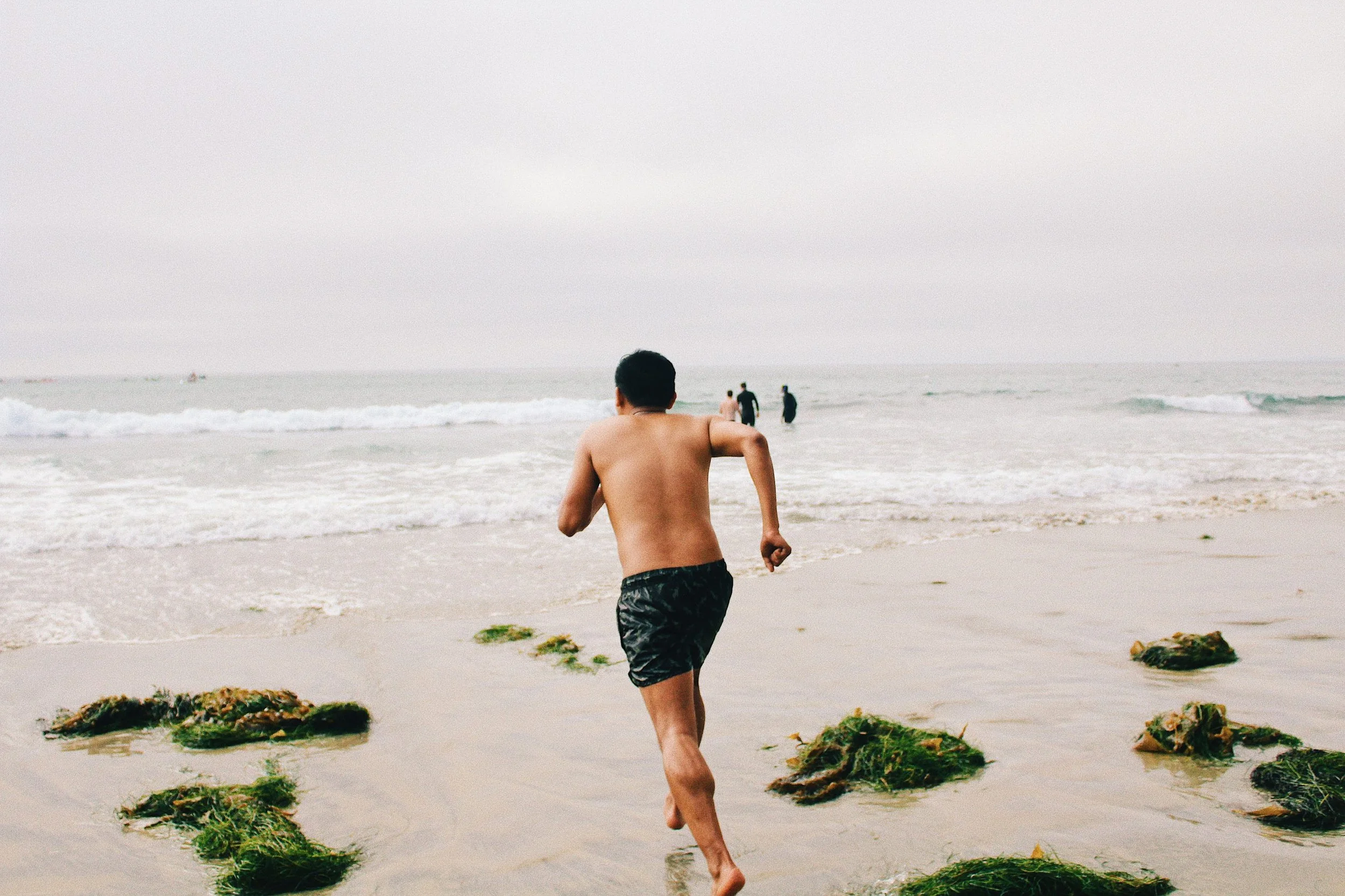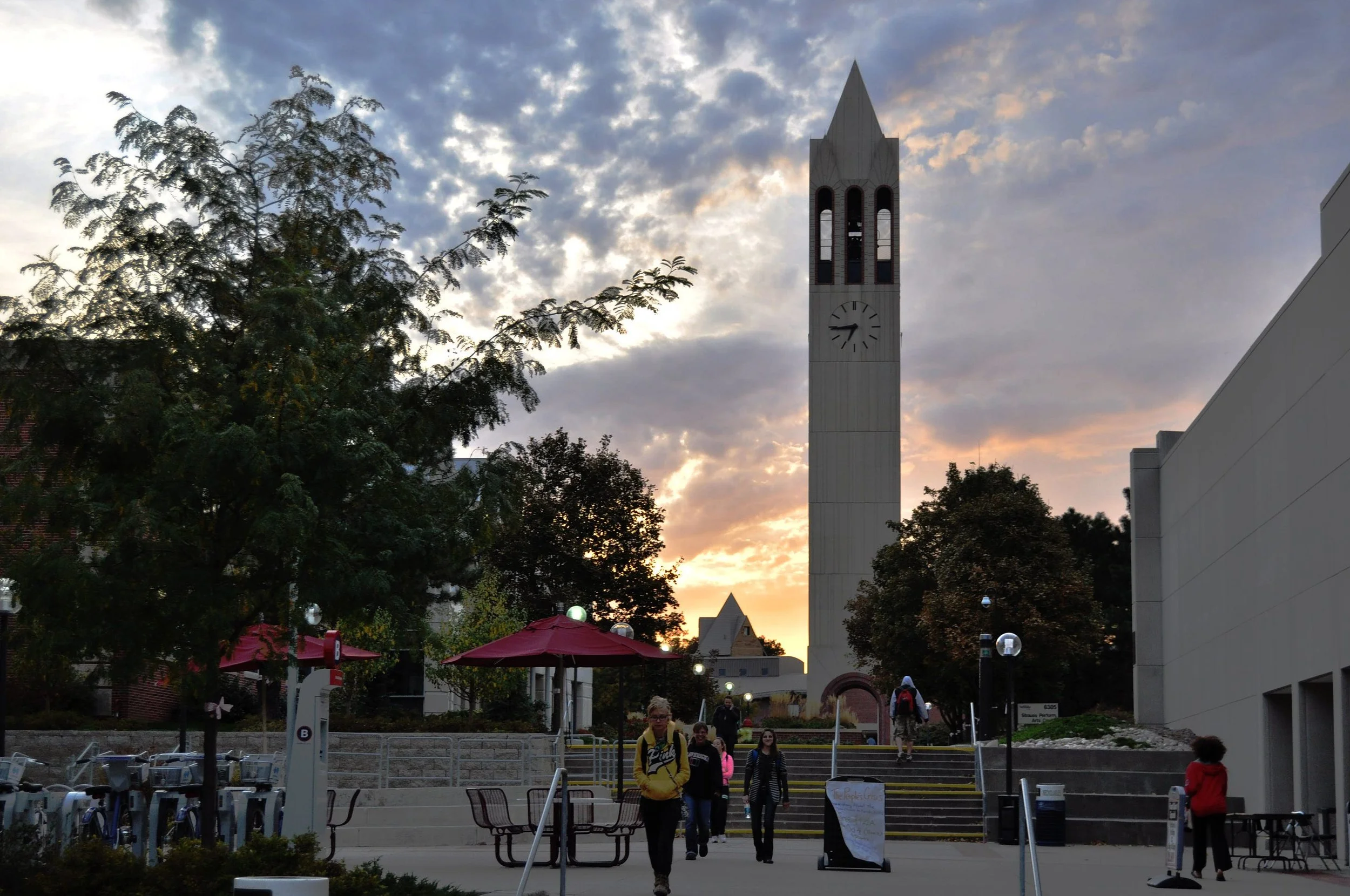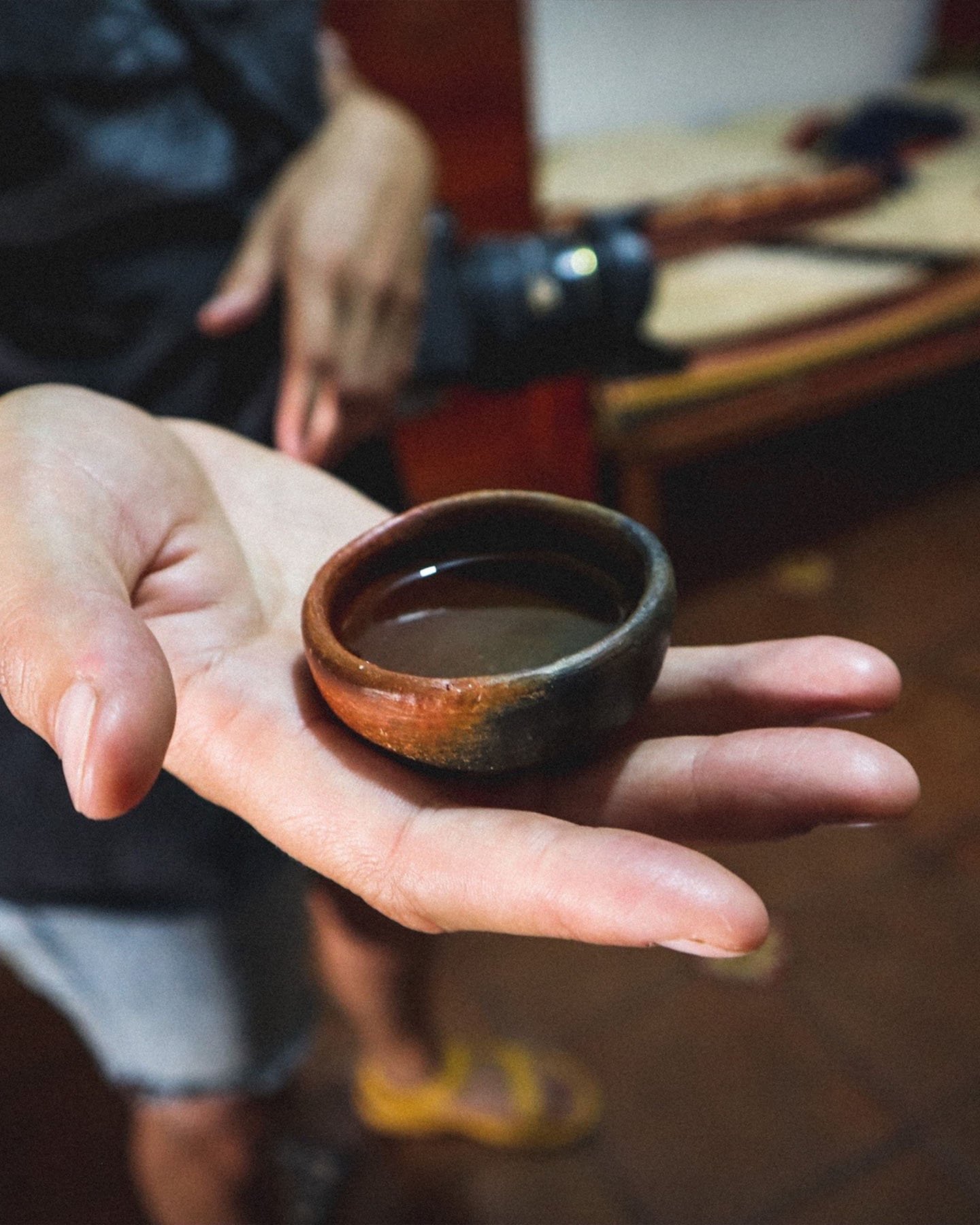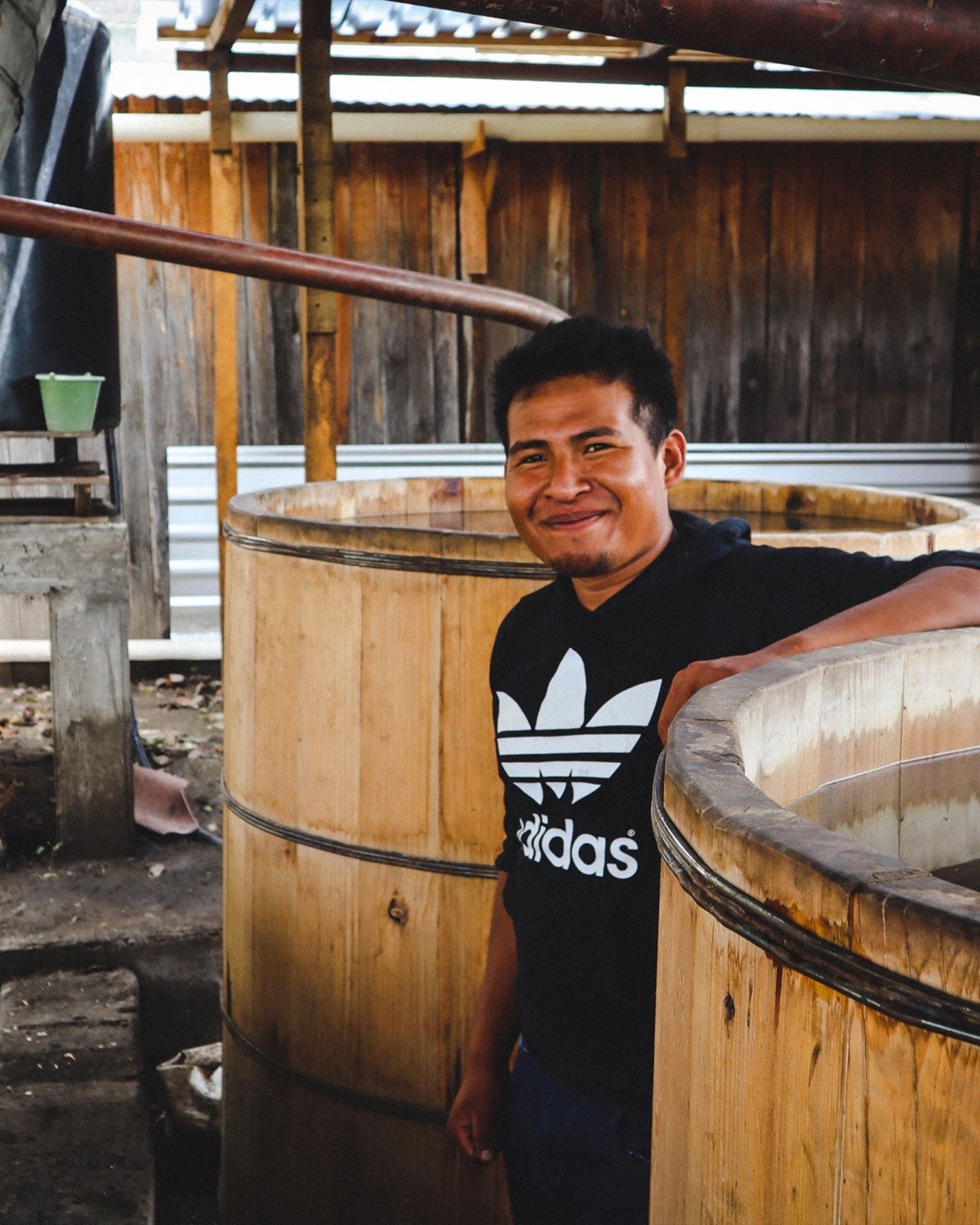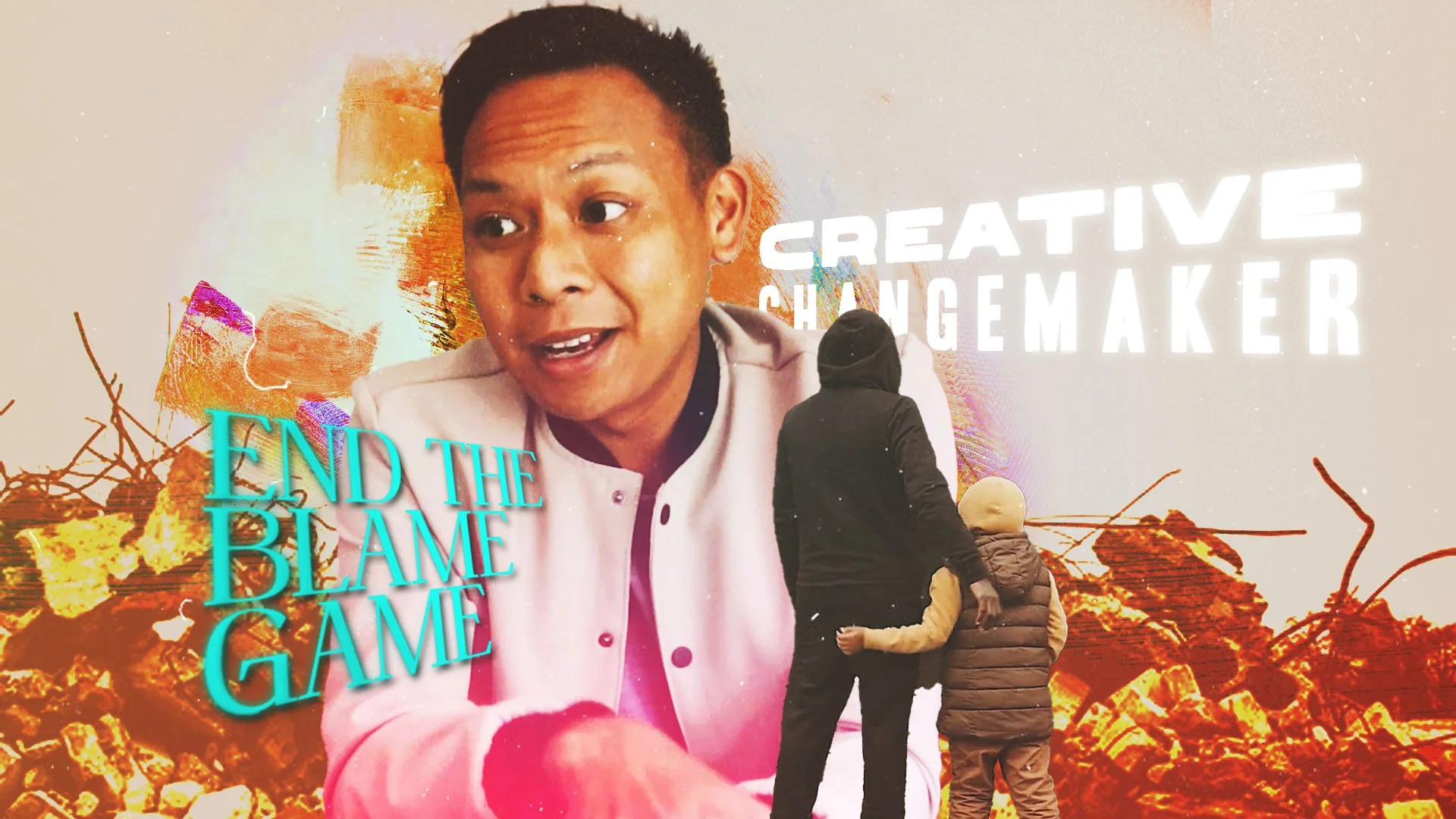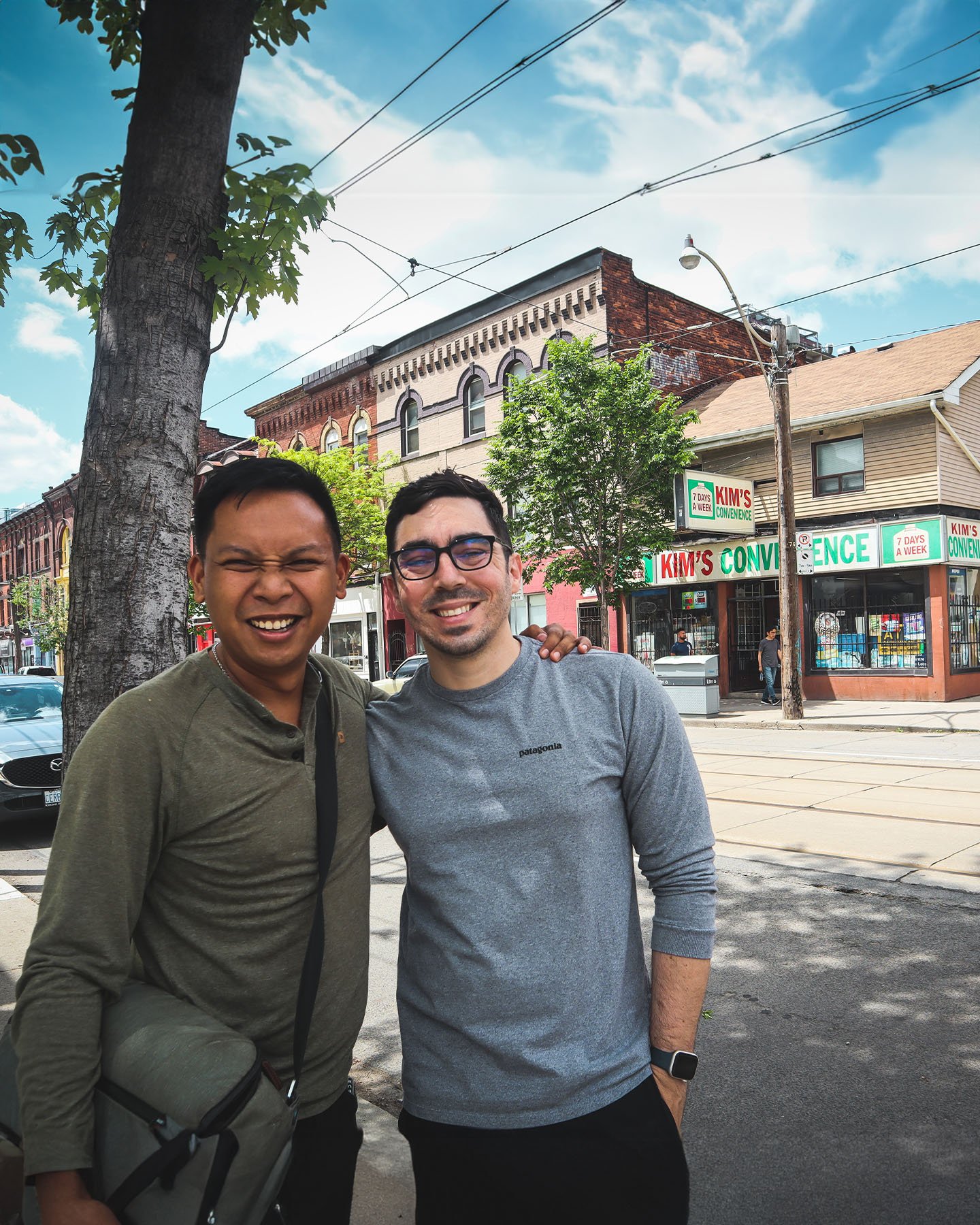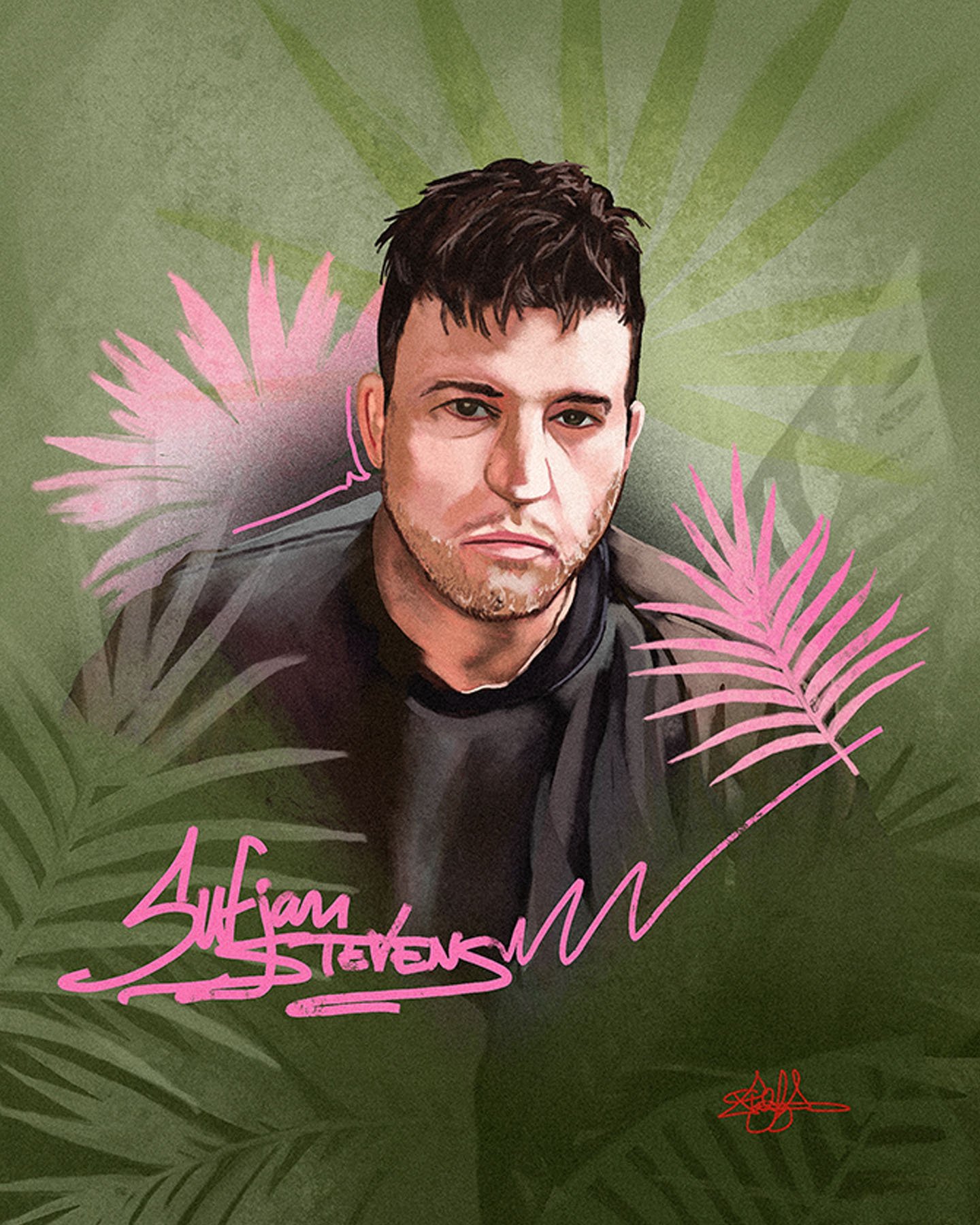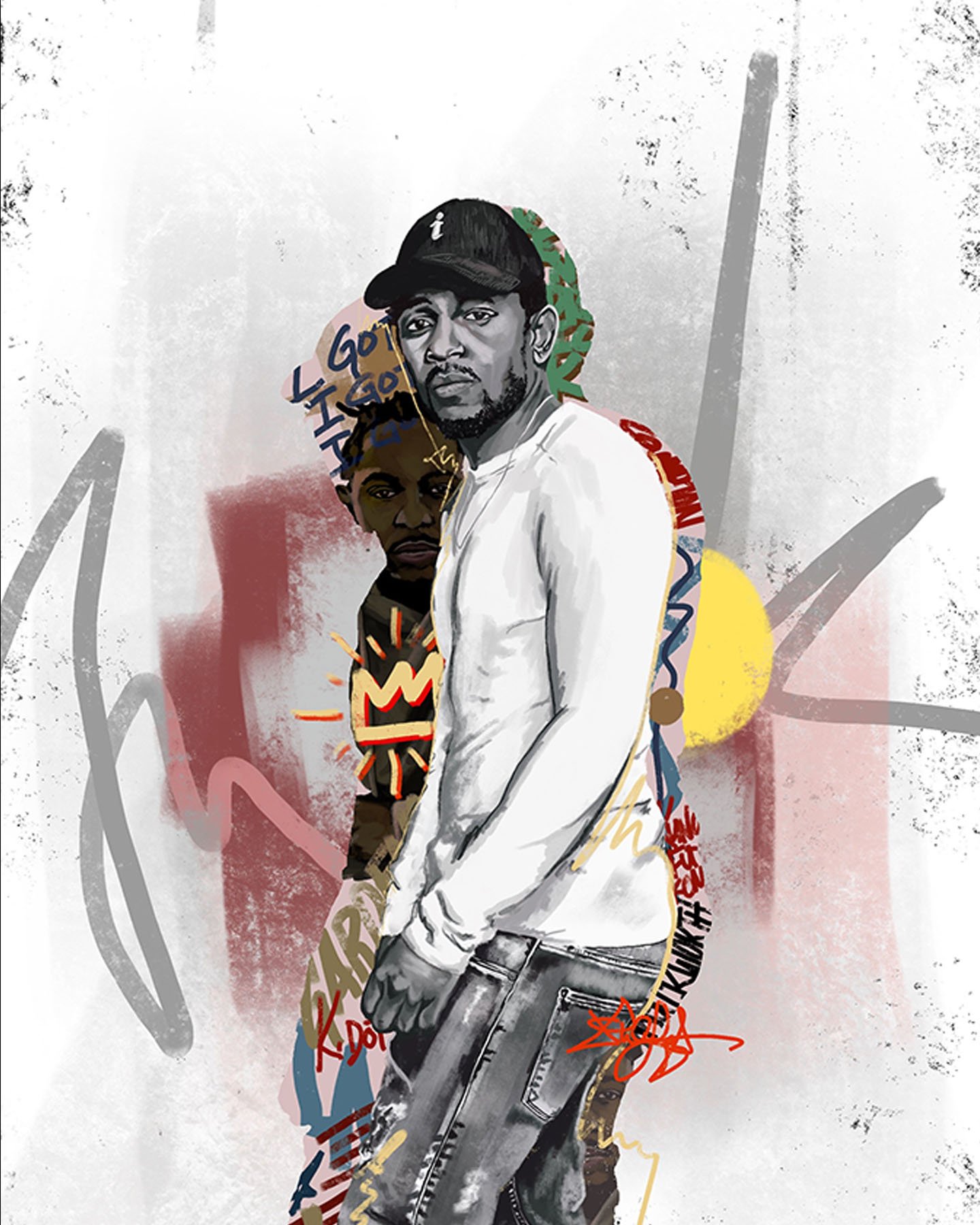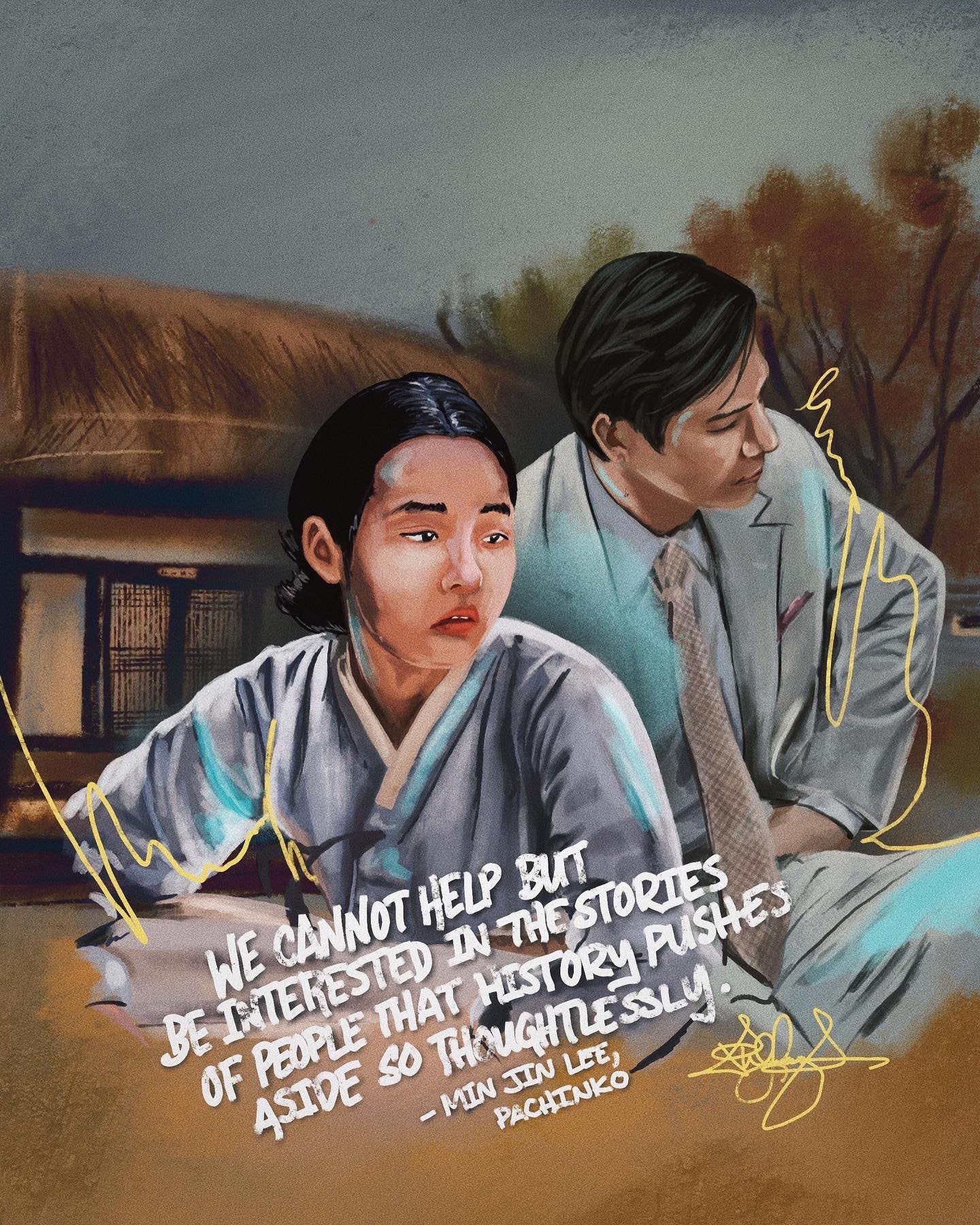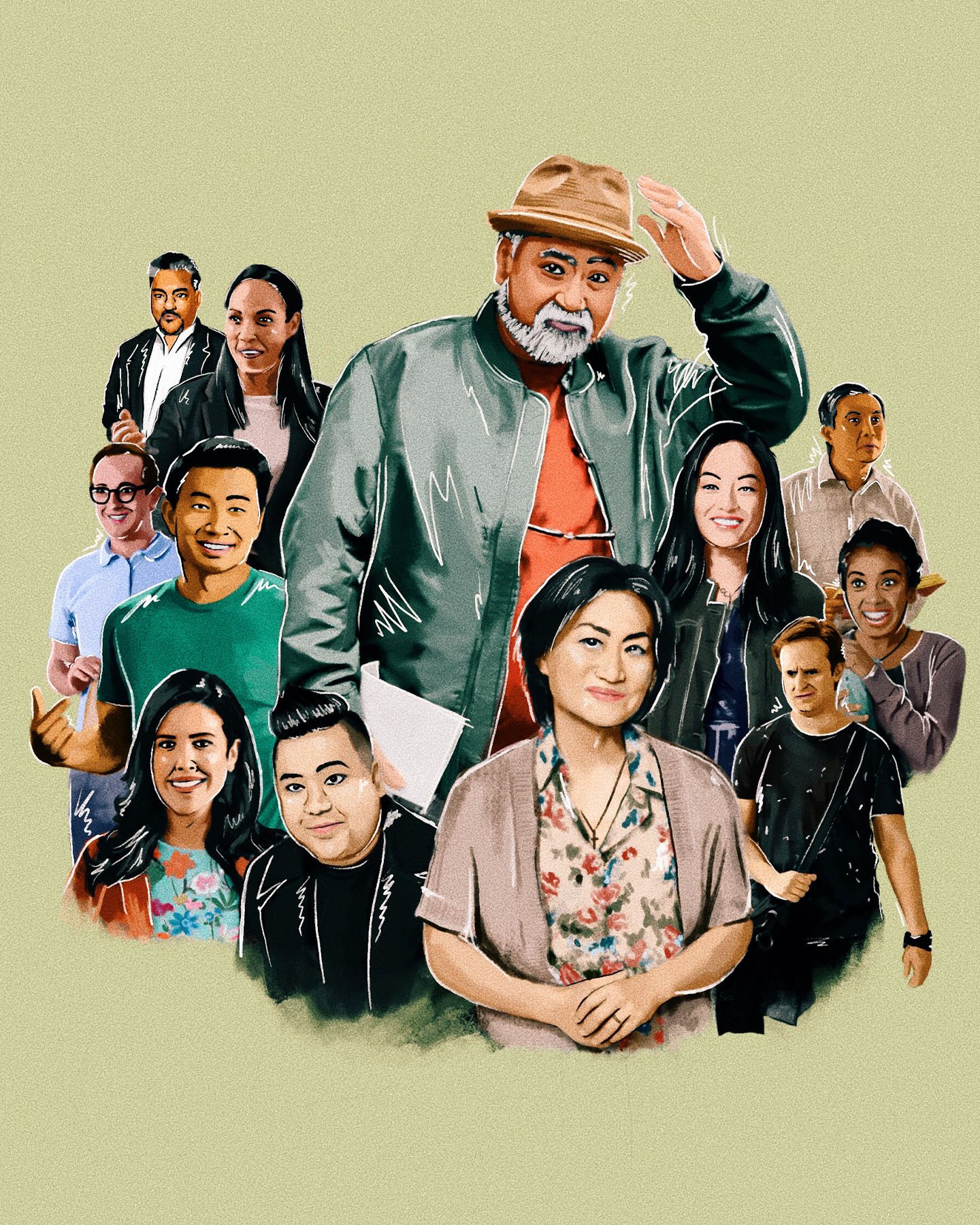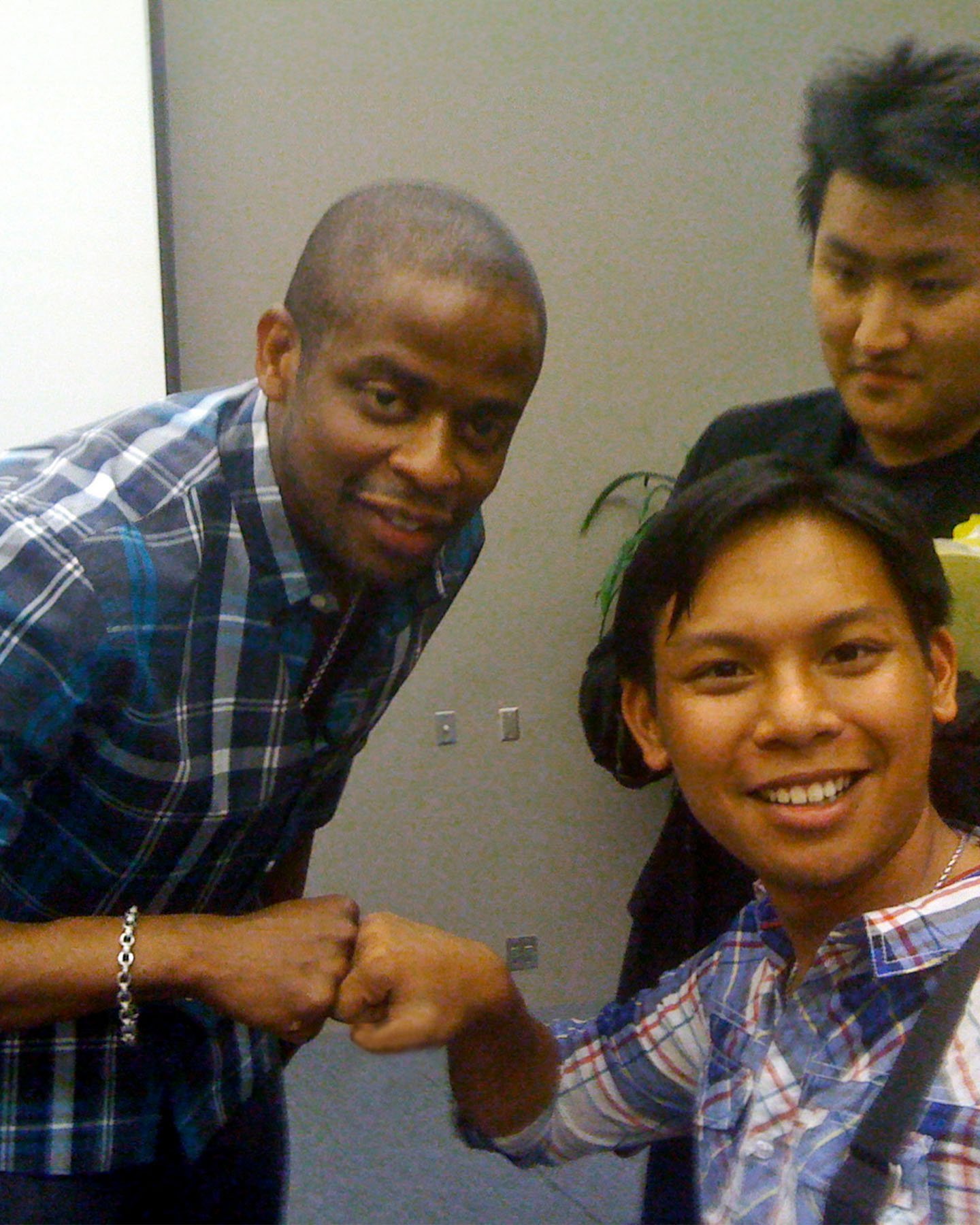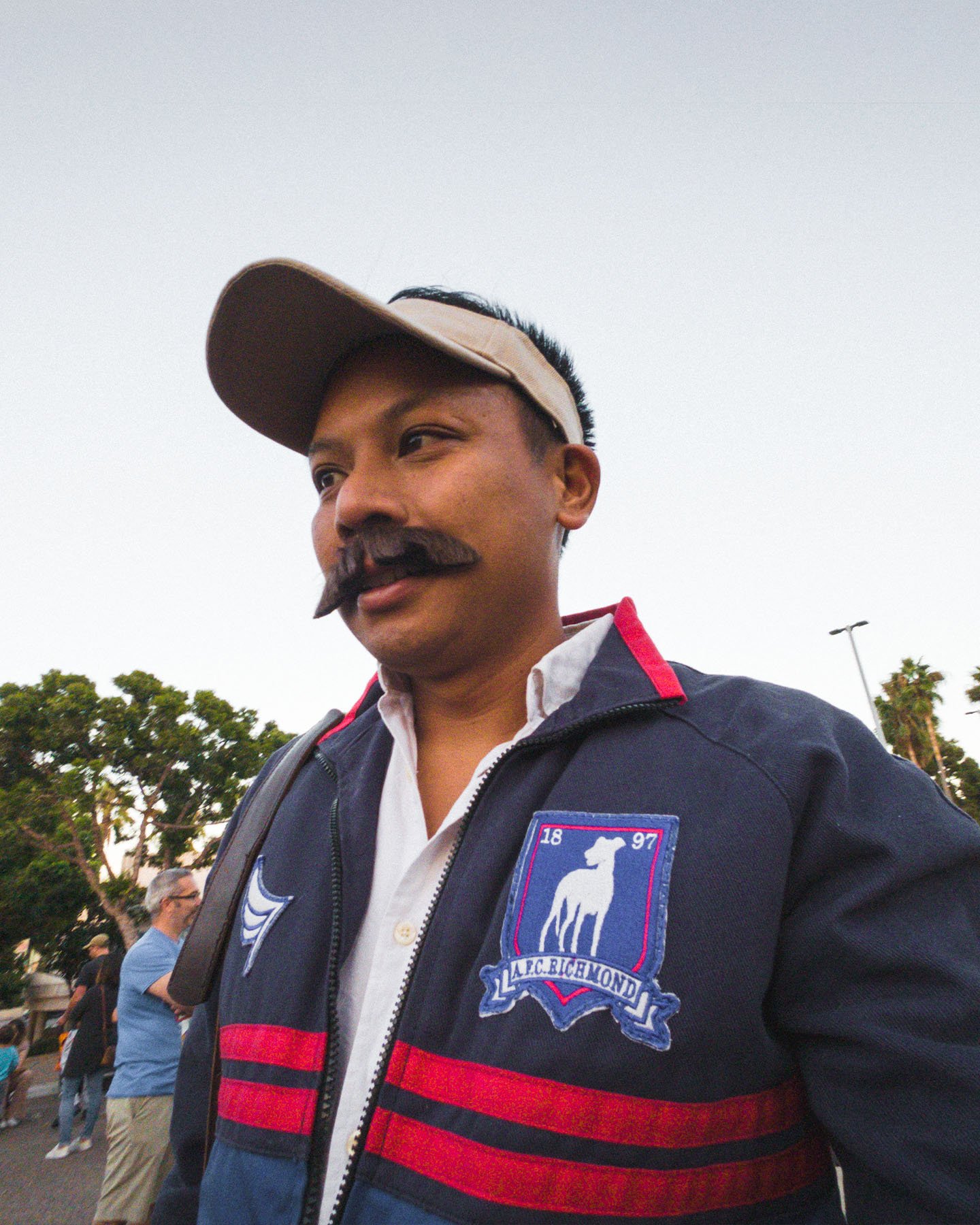When I jumped back into improv about a year ago, one of my biggest goals was this: keep playing regularly. Find some people, maybe form a team… just keep having fun. And it looks like that was accomplished! Metal People is an official indie team and all, and we’ve got a bunch of show dates booked over the next few months.
3.29 - Finest City Improv (student recess)
3.31 - Time TBD - Mockingbird Improv
5.10 - 9pm - Finest City Improv (opening for Bankers Kill)
6.1 - 9pm - Finest City Improv (opening for Willis!)
And more dates to come… eventually!
Lessons from Nurture
Nurture: Word of the… month(s)
You know how people have their word of the year that then becomes a theme or area of focus in their life? I always preferred to do that more retroactively… too much happens unplanned over the course of a year that they rarely end the way you thought they were going to.
But I liked the idea of setting an intention beforehand and then leaning into it with your life. So I started trying to do this for seasons… roughly three month intervals.
Going into the winter months, the overarching theme in my life was nurture.
If I’m being honest, I kind of chose the theme because, well, I’m the male parent and my kids are always craving mommy. It’s pretty natural for toddlers to have a preferred parent, and let’s be real, 98% of the time it’s mom, so I’m not exactly offended by my toddlers…
But there are some huge inconveniences. She can’t pass through a room just to go grab something if they’re there without setting off the crying when they realize she’s not there to stay.
As the B-parent, I then get the job of trying to pry them off of her, which you know, probably doesn’t do a whole lot to change the dynamic.
We probably fall into pretty stereotypical roles in our family. She’s the place of safety and nurture. I spark the adventure and discovery and their confidence and ability to do things. Not exclusively, of course, but kids need both and it’s common for these to be split in two parent households.
Anyways, I decided to experiment with developing my more nurturing side. Work out those muscles. I didn’t really know where to begin, other than the idea of physically holding the little ones.
When winter started, my mom took a planned vacation to New Zealand, leaving us a few gaps in childcare throughout the week. Then our nanny had a very sudden family emergency. That left us with huge gaps for me to cover.
If nothing else, I was getting a lot of time to work on this. There were a lot of kids in the background of my Zoom calls that month.
I think on the surface, nothing looked radically different. I spent lots of time with the kids, did my weekly one-on-one adventure with each one, and tried to juggle quality time with the tasks and chores.
But quite a bit, when one of the toddlers would be having a meltdown at the same time I was trying to get something done, the word nature would come to surface in my mind.
That helped me shift gears on the spot and instead of responding reactively, I remembered to respond in ways to help usher their emotions.
Here are a few things about nurture I learned…
First, it’s not encouraged or expected from men very much. But you probably already knew that.
In the past couple weeks I’ve seen a couple of rage-bait videos essentially encouraging men to be bad fathers or they’d lose masculinity points or something. Nothing says secure-about-masculinity than being constantly worried about losing it, I guess.
I know it’s more associated with feminine energies, or whatever, but those conversations about gendered energies are out of my wheelhouse. All I know is nurture us repressed among men.
I’d imagine we’d be in a pretty different world if men weren’t often taught to be scared of being nurturing. Like, the male figure I most associate with nurture is Fred Rogers, so yeah, more of that energy really would do a lot of good in the world.
To chose to be more nurturing, as a man, is to make a countercultural choice, going against the grain of what’s expected. And being nurturing takes nothing away from other traits like strength, protectiveness, and boldness. They’re all compatible.
Nurture also does call for a good deal of strength and resolve. To be in a room of breakdowns, big feelings, and chaos, to absorb it, and turn it into calm and safety is an actual power. You’re transforming energies there.
It is so easy to be reactive, to meet stress with your own stress. I like to think of nurture as a landing pad where that can be absorbed and redirected.
Any associations of nurture with weakness are way misguided.
I’ve been using parenthood as most of my examples of nurture, but you can be nurturing in any setting. I think one place where I’ve done this fairly naturally has been the workplace.
Being nurturing means giving people a safe spot to be loved as they are and to be seen as their very best self. All these are active choices.
While nurture is much more than a physical disposition, there’s a very strong physical element. Sometimes if you’re not even sure how to make a nurturing choice in a moment, just physically do something that you associate with nurture and if nothing else it’ll put you in the right mind frame. Hold your palms open. Kneel to eye level with the kids. Hum like Kid Cudi.
Oh and eye contact. Connect and validate the experience in front of you. From there you can move forward together.
Finally, one phrase I hear a lot in intentional parenting circles is this: they’re not giving you a hard time, they’re having a hard time. That’s a good one. And while you’re not wrong to say, why can’t it be both? From the kid’s POV, it means they’re having a tough time. I’m often reminded that with limited verbal skills and constant exposure to new and novel experiences, those first few years of life are kinda overwhelming.
I’d even go so far as to say… why not think this about challenging encounters in our world at large? The internet gives us easy access to everyone’s outrage. We can see hot takes the world over.
What I’m learning to recognize is the hurt behind the hot take. Even the ones that initially make my skin crawl.
The hurt is there, when you remember to see it. The pain ends up going somewhere, often in the form of outward vitriol. But perhaps we can try something else. Absorbing it and making a new energy. Our world has a need for more nurturers.
San Diego finally feels like home
I’ve lived in San Diego more time overall than I’ve lived anywhere else. Yet it’s taken a really long time for it to feel like a place that felt like home.
It’ll sound funny to most people that I didn’t always love it. For most people, living in San Diego is a luxury. But for the longest time, I had a hard time feeling at home here and wondered if I’d be leaving. Things like the weather (which for me is ~too~ sunny. I know, right?) and relaxed nature added to its price tag, but not so much its value to me.
But the most important thing to me was a place that felt like home. Where my people are.
Only in the past year has it actually started to feel like home. And more importantly, it’s helped me recognize what actually makes a place feel like home. It’s where the most important storylines of your life unfold.
Most of us are well aware that it’s possible to live somewhere, sometimes for a very long time, without really having it feel like the place where you belong.
Recently, I’ve been really starting to value having a place that feels like home. Feeling like I belong to the city and community that I live in.
Which is funny because I spent such a long period of time on the other end of the spectrum. Living nomadically, moving frequently, and feeling defined by the constant change.
My experience was one that’s become increasingly common. I moved around a few times as a kid. Then I moved around a lot as an adult. Finishing schools, starting jobs, starting a family we’re all changes punctuated by a change in ZIP Code.
Not area code, of course. I’ve been rocking the same number since my Nokia Brick.
When I realized the norm of having a place that felt like a permanent home wouldn’t be MY norm, I wound up finding a lot of meaning in the image of being nomadic.
And to be honest, there’s a LOT there.
Pilgrimages.
The Alchemist.
Thrice’s song In Exile.
So spiritually rich.
I especially found a lot of growth, meaning, and soul level nourishment from travel. On some of my earliest trips as an adult, I felt so much connection to others and the world at large along with so much self discovery, that it seemed to really reaffirm my sense of identity as a nomad.
For a short period of time, I even had nomad as my actual job title. It was kind of a well branded internship, but as a nomad for a nonprofit organization, my job was to live in a van and raise awareness of the North Korean refugee crisis while traveling.
There are years on my timeline where I can’t even say where I lived, because I would leave one city after saving up enough to put my few possessions in a storage closet except for those that would go backpacking with me for months.
One of my earliest travel experiences as an adult came as a student, during a semester in Italy. Part of what was awesome about that experience was that I anchored myself in Siena while taking a side trip on weekends to any one of Italy’s other iconic destinations. Venice. Verona. Bologna. Milan.
I’m glad I did it that way, because Italy has so much to see. And because coming back to Siena, small in size despite its cultural footprint, always felt like a cozy return.
I’d come back from the excitement of a city’s nightclubs or a villa’s wineries and feel a little more relaxed in Siena. I loved having regular visits to the same ordinary supermarket. That helped me feel more like I was actually living there. Faces I saw on my morning walk everyday became familiar. I could navigate without a map. It felt like where I belonged.
It was the smallest sample taste of somewhere feeling like home.
I got a much larger scoop after that semester abroad.
I returned to my actual college town. Santa Barbara.
As I drove into town and saw the familiar coastline… then the familiar shop signs… even the goofy font on all the brown street signs… I felt like I was back in my proper environment.
I couldn’t wait to reconnect with my people and swap stories from that summer.
I realized that Santa Barbara was the place where I would find all the open storylines of my life. The girl I’d been talking to. The friendships that were taking root. New projects I was creating.
The funny thing was, I was literally without a house. I returned from Italy at an awkward time that led to me couch surfing for months.
(Long story very short… I kinda met my wife that way!)
Anyways, Santa Barbara at the time truly felt like home. But it would be the last place I’d feel totally at home for a good while.
School ends. People graduate. And super expensive towns without entry level jobs have a way of ushering you out.
I’d move to Bakersfield, San Diego, Oregon, South Africa, LA, a van, and several hostels, each feeling temporary.
But I began to recognize that feeling of returning to Santa Barbara and being eager to reconnect with my people as a sign that a place feels like home.
When something as basic and goofy as kitschy brown street signs feel electric, that’s how you know you’re going somewhere that has meaning to you.
This is how I’ve come upon my favorite definition of what makes a place a home.
It’s where the active storylines of your life are unfolding.
When a place starts feeling like home
Finally feeling that way about San Diego
MAR 15
What makes somewhere feel like home?
Most of us are well aware that it’s possible to live somewhere, sometimes for a very long time, without really having it feel like the place where you belong.
Recently, I’ve been really starting to value having a place that feels like home. Feeling like I belong to the city and community that I live in.
Which is funny because I spent such a long period of time on the other end of the spectrum. Living nomadically, moving frequently, and feeling defined by the constant change.
Why did San Diego just start to feel like home? Find out on my latest video.
My experience was one that’s become increasingly common. I moved around a few times as a kid. Then I moved around a lot as an adult. Finishing schools, starting jobs, starting a family we’re all changes punctuated by a change in ZIP Code.
Not area code, of course. I’ve been rocking the same number since my Nokia Brick.
When I realized the norm of having a place that felt like a permanent home wouldn’t be MY norm, I wound up finding a lot of meaning in the image of being nomadic.
And to be honest, there’s a LOT there.
Pilgrimages.
The Alchemist.
Thrice’s song In Exile.
So spiritually rich.
I especially found a lot of growth, meaning, and soul level nourishment from travel. On some of my earliest trips as an adult, I felt so much connection to others and the world at large along with so much self discovery, that it seemed to really reaffirm my sense of identity as a nomad.
For a short period of time, I even had nomad as my actual job title. It was kind of a well branded internship, but as a nomad for a nonprofit organization, my job was to live in a van and raise awareness of the North Korean refugee crisis while traveling.
There are years on my timeline where I can’t even say where I lived, because I would leave one city after saving up enough to put my few possessions in a storage closet except for those that would go backpacking with me for months.
One of my earliest travel experiences as an adult came as a student, during a semester in Italy. Part of what was awesome about that experience was that I anchored myself in Siena while taking a side trip on weekends to any one of Italy’s other iconic destinations. Venice. Verona. Bologna. Milan.
I’m glad I did it that way, because Italy has so much to see. And because coming back to Siena, small in size despite its cultural footprint, always felt like a cozy return.
I’d come back from the excitement of a city’s nightclubs or a villa’s wineries and feel a little more relaxed in Siena. I loved having regular visits to the same ordinary supermarket. That helped me feel more like I was actually living there. Faces I saw on my morning walk everyday became familiar. I could navigate without a map. It felt like where I belonged.
It was the smallest sample taste of somewhere feeling like home.
I got a much larger scoop after that semester abroad.
I returned to my actual college town. Santa Barbara.
As I drove into town and saw the familiar coastline… then the familiar shop signs… even the goofy font on all the brown street signs… I felt like I was back in my proper environment.
I couldn’t wait to reconnect with my people and swap stories from that summer.
I realized that Santa Barbara was the place where I would find all the open storylines of my life. The girl I’d been talking to. The friendships that were taking root. New projects I was creating.
The funny thing was, I was literally without a house. I returned from Italy at an awkward time that led to me couch surfing for months.
(Long story very short… I kinda met my wife that way!)
Anyways, Santa Barbara at the time truly felt like home. But it would be the last place I’d feel totally at home for a good while.
School ends. People graduate. And super expensive towns without entry level jobs have a way of ushering you out.
I’d move to Bakersfield, San Diego, Oregon, South Africa, LA, a van, and several hostels, each feeling temporary.
But I began to recognize that feeling of returning to Santa Barbara and being eager to reconnect with my people as a sign that a place feels like home.
When something as basic and goofy as kitschy brown street signs feel electric, that’s how you know you’re going somewhere that has meaning to you.
This is how I’ve come upon my favorite definition of what makes a place a home.
It’s where the active storylines of your life are unfolding.
This explains why during my seasons in Oregon or Bakersfield I felt excitement around leaving town, but not so much returning. I didn’t have many active storylines in town. And visiting friends in other places and pursuing long awaited trips… those felt like more active storylines.
Anyways, I’ve been living in San Diego for seven years now… my second time living here. And despite the years I put in, it never seemed to contain my active storylines, or my closest community.
Until maybe the last year or two.
Last summer, I spent a weekend in Portland, one of my favorite cities to visit. And while I had a decent time overall, on the flight back, I found myself so excited to return.
The San Diego airport, in spite of its relative plainness was such a welcome sight.
I realized how I had so many new connections, a thriving life at home, and things I was looking forward to right where I lived.
I haven’t been able to say that for a long time.
Will it be permanent? I don’t know what the future holds. It wasn’t that long ago that I was looking elsewhere, seeing the rising cost of living and the fact that with three kids, my life will never be cheap exactly.
But right now, I know I’m good with where I am. There are plenty of spiritual metaphors that come with putting down roots too, and belonging to the land. It’s nothing to take for granted.
Breakout Ballers



I dunno about you, but I’ve found this NBA season to be one of the more fun ones that we’ve had in a while, largely in part due to a bunch of breakout seasons around the league. Torch is being passed from one era to the next.
Had to draw up a set with some of my favorite breakout players from this year.
I Underestimated Bangladesh
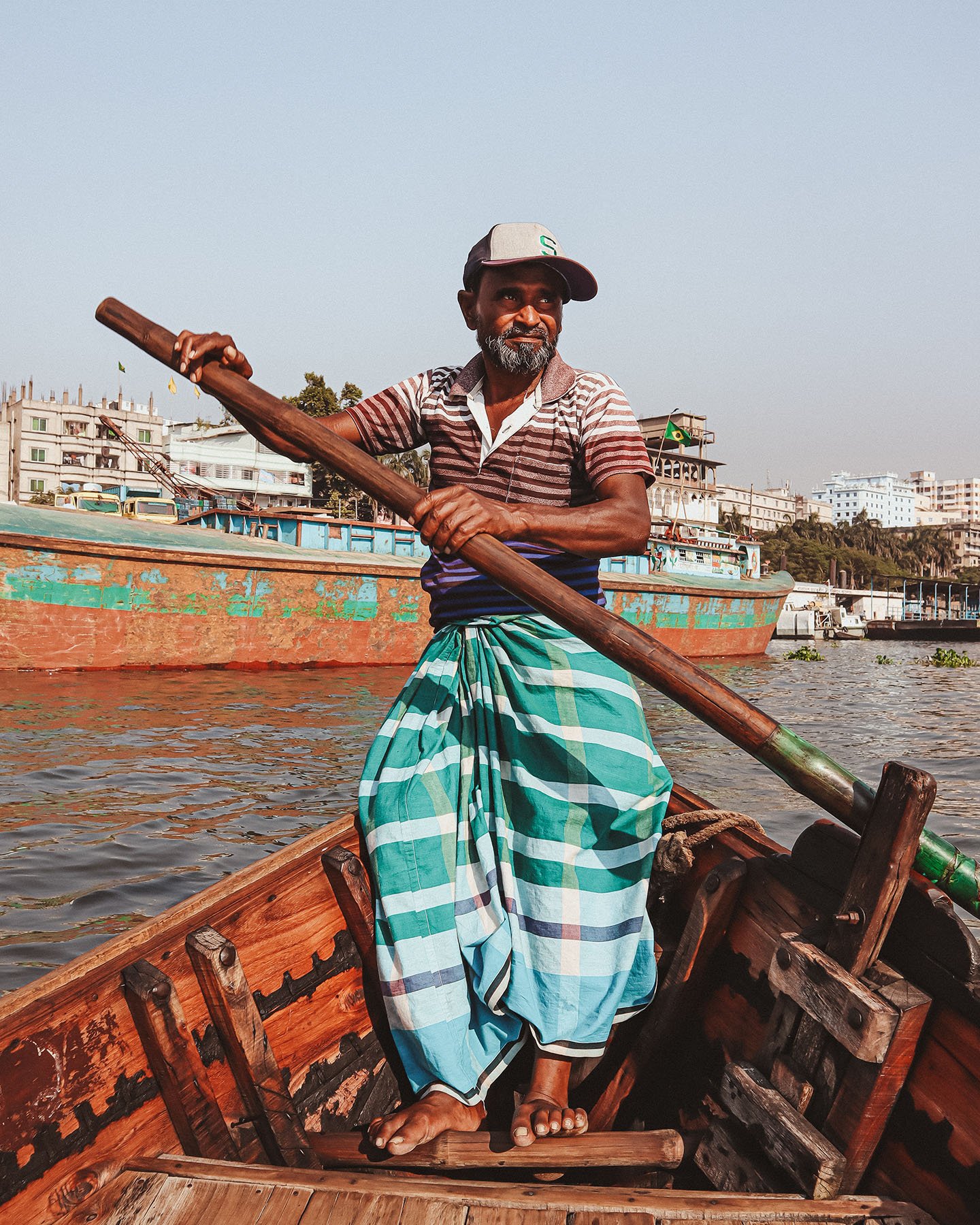

Confession: Before visiting Bangladesh, my interest was mild at best. When the things you hear about the most are crowds and smog, those aren’t exactly high selling points, and even people from there made it seem underwhelming.
But if you have the right people to show you around to the right places, there is an absolute wealth of stories and things to explore. The people are warm, welcoming, conservative, and absolutely determined to push forward in order to make a better life for the next generation. Problem-solving is an ubiquitous trait, and seeing that applied to major threats like climate vulnerability was eye opening.
Bangladesh is a country that has a lot to teach its visitors, if given a fair chance.
Living in California
Seven years since I’ve moved back to California.
I’ve always been mixed on California, to be honest. Of course it’s one of the most romanticized places. But it’s costly, and I know a lot of that cost goes to weather… and I actually prefer gray skies! Then you have a lot of nature between the forests and ocean, but the whole lower left quadrant of the state is an urban sprawl.
I’ve also always appreciated places that go overlooked and showing them a lot of love. California does not fit that bill. I find it pesky when Californians treat every other state as bland and generic without having ever been there.
But! It’s home right now, and it makes me want to put forth a good effort to appreciate it.
I love the diversity, both of nature and culture. I love that the church I used to live next to did its services in Spanish, Vietnamese, and Amharic. I love that one mile down the road near my house offers a Filipino, a Vietnamese, a Korean, and an Indian supermarket on four consecutive blocks.
I love the complexity of coastal ecosystems. I love the climate of a high desert. The green of the upper half and gold of the Central Coast.
Cali will always be a mixed bag for me. But it’s home, and you gotta learn to love that.
Bonus points to whoever can recognize all the spots in photos!
What to do if you don't believe you will win
The art of showing up anyways
“I believe that we will win.”
I’m a big fan of the US Women’s National Team’s rallying cry. As much as it gives off the Ted Lasso feel-good-feels, there really is something to seeing victory as something that’s in progress. And I think that’s not just true of sports, but other things we’re fighting for with more significant social impact.
But what do you do when it doesn’t actually look like a win is in the cards?
This is the exact question we ponder on the newest Creative Changemaker!
A month or two ago, I came across an editorial asking why all the major social movements and uprisings of the past few years don’t seem to have gone anywhere… from the Black Lives Matter protests in 2020 as far back as Occupy Wall Street in 2010. We’ve seen Arab Springs and Fees Must Falls, and while MeToo might have ended, or at least derailed some careers, what’s missing is a lasting action that prevents the injustices being protested from repeating themselves.
I think it’s easy for many people who had a lot of hope in these moments, who invested a lot of energy in giving them life, to feel a bit disillusioned. And that’s totally air. I find that our world is very stubborn when it comes to changing the status quo, and even when big things, like world-halting pandemics seem to change all order, we also cling pretty tightly to our what we’ve come to recognize as normal.
Sometimes that’s a good thing, but often it’s not. Especially when it leaves unjust systems in tact.
When you push for revolution so intensely but only get symbolic or incremental change, it's easy to wind up frustrated and demoralized. It makes a lot of sense to feel like all of your efforts were for nothing and that if change didn’t come after all that, it probably won’t ever come.
As much as I can empathize with those feelings, having a defeatist attitude can be pretty harmful. If I knew I was playing on a football or baseball team with players who had internalized a sense of defeat like that, I wouldn’t want them on the team. Nothing personal, but there’s not hing you can do with defeatism. But what do you do when progress comes in the form of cookie crumbs?
I think Nelson Mandela would know a few things about that. His push for ending apartheid was initially labeled as terrorism. In fact, he’d be on U.S. terrorism lists all the way until 2008. He had to speak knowing he would be deliberately misinterpreted and misunderstood. And when he got some momentum to his movement, well, he also got a 27 year prison sentence.
Seems like he’d know how to take an L, but the way he put it, he never took one. “I either win or I learn,” he said.
The lessons you earn from incomplete pushes for justice are valuable indeed. And I think a reframe like that can be extremely helpful.
Of course, go into a movement with a clear goal. A change in mind. Be clear about it, and push for that change.
But also realize that progress and wins can take a variety of forms and know how to not miss those along the way.
I recently heard an interview with some of the leaders of Hong Kong’s protests in 2014. In many ways it’s easy to see their uprising as a failure. They were up against some unlikely odds anyways. Trying to push for something against the Chinese government from an ambiguous state of nationhood already puts you behind the 8-ball.
The proposed reforms lost in legislation 28-8. Many student leaders were imprisoned.
But the leaders who shared their reflection said that they didn’t see it as a full loss. Because of their actions, they changed the course of conversation around their issues of concern for years to come. And they gained the sympathy and interest of an international audience
I find Erica Chernoweth’s 3% rule convincing. It states that all it takes is 3% of a population to be wholly committed to a cause for it to be a success. But if the threshold were that low, you’d think we’d see more movements come to fruition, huh?
Sometimes it is a matter of the stars lining up.
You often get to a point where the clear majority of a population wants a certain change to happen, but what’s missing is the political willpower to see it through. Gun legislation in the U.S. is a pretty good example of this. However, moving public pressure forward ultimately has an impact on legislation. We’ve seen that happen in climate advocacy a good deal. And when a law does change, general attitudes around a topic typically move in the direction of the law. This happened over time following the Civil Rights Act.
It’s an interesting dynamic where political will and cultural attitudes are both causes and effects of each other. It’s unfortunate that they don’t always do so in lockstep.
But that’s why I think it’s valuable to keep moving both forward as you are able to. Pushes for a Green New Deal and student climate walkouts happened in the middle of an administrative majority strongly opposed to these things. But the public support grew so that when political tides shifted, enacting much stronger climate laws was a windfall.
It’s also helpful to remember that sometimes backlash is a sign that change is happening after all.
Backlash is real. A lot of the nostalgia for the confederacy in the South only surfaced after the Civil Rights Movement abolished Jim Crow laws. Mass incarceration also scaled up in the years that followed. The Jim Crow laws themselves were a backlash against abolition.
Furthermore, I think a lot of stunts like book banning and anti-immigration rhetoric have emerged as backlash to these social movements as of late.
I think we have yet to really see just how many people have become activated by the social tensions of the past five or six years. It may have been different things to different people. Race, climate, corruption. Whatever it is, a very large portion of the population has recently found a cause they care about passionately. Many have experienced perhaps only one cycle of an uprising and a roadblock.
Still, all those shifts will have an impact as we get further down the road. When you’re focused only on the time horizon of a year or two, it’s easy to mistake backlash as a stalemate. Sometimes it’s an unpleasant sign of progress.
Showing up isn’t about us.
Ultimately, however, I think we all need to recognize that the call to show up and play our part in moving things forward doesn’t have a whole lot to do with us. When we’re part of a cause that’s bigger than ourselves, we can understand that a win for the cause might look a lot different from a personal win.
This is where showing up for a movement is quite different than the athletic examples I referenced earlier. Because sometimes you aren’t showing up just in search of a win.
Oftentimes, showing up is something you do to let the people who are most impacted by an injustice know they aren’t alone. To know that somebody else sees what they’re going through and stands with them.
In a micro-setting, this might look like confronting someone when they express a harmful belief. Not because you think you’ll convince them, but because you want to set a norm in that space of what’s tolerable and what isn’t. That has an impact on other people in that space who may be harmed by the belief.
In a more macro-setting, it looks like comments I’ve gotten from people in Haiti and other place expressing appreciation for hearing and sharing their stories. That knowledge that you aren’t invisible or alone is extremely valuable.
The reality is, we won’t see everything into completion in our lifetime, it’s about showing up anyways.
When I was a little younger, I would frame every cause I was working towards as a change I hope to see in my lifetime.
I want to see a free _____, in my lifetime. Within my lifetime, ______ will no longer have to ______.
Maybe enough time has gone by where “in my lifetime” isn’t the horizon it used to be. But I always realize, I need to be ready to show up for things where this vision isn’t possible.
If I get the privilege to live into my senior years, I hope to still be finding my way to work towards causes, many of which I wouldn’t get to see in the time I have left. It would be more about the generations following me.
I also know that the work is never totally done. You keep moving the needle forward. My children will have their own struggles for justice. There are many ways in which the struggle continues after someone’s life.
As someone who frames a lot of things through the lens of sports, I do think it’s important and valuable to envision a win and to play to win, but you also have find the other things that keep you in the fight.
I show up because it’s what I do. Because people matter. Because I care about the people who are oppressed and I want to stand with them. All of these are things we can do even when we don’t believe that we will win.
Javier in Viota
When Javier was 16, it was right at the peak of civil conflict between armed groups in Colombia. One day, he was kidnapped right from school by a militia.
Javier’s family came to try and negotiate his release, only to be told they no longer had a son.
“For two years, I took my time. I saw others try to escape and get killed in the process. I studied everything I could observe. I worked to earn their trust. I tried to do tasks to help, usually cooking but sometimes other things.”
I infer from his tone that the ‘other things’ were way more difficult to talk about.
“Then I made my escape.”
Javier’s escape plan had to be perfect. He knew he would only get one shot, with no margin for error. Thankfully, he played his cards just right.
I think about Javier’s story a lot. We met when I was in Colombia a few years ago. After he shared all his experiences from the peak of Colombia’s civil conflicts, he then invited me on to his coffee farm. We had lunch together, and he and his wife even offered a taste of their unbelievably good homemade coffee liquer.
February 2024
Okay, can I just go off on February 2024 for a little bit? This past month was ridiculous!
The hardest part was going without 40%-ish of our childcare support for most of the month due to travel plans, road closures, and health. Deanna and I had a few days a week of taking on all three kids by ourselves for long chunks of time. We both dealt with this while being sick and trying to mend. For me, it was the worst I’ve gotten sick in recent memory. On top of that, we had to deal with power outages at home a few different times.
In spite of that, I somehow ran five half-marathons. All on Thursday mornings before work. One while recovering. One during a flash flood warning.
I played three improv shows, including my class graduation show.
I started interviewing media teams in Thailand for an upcoming project, and planning two international trips.
And we got a visit from some of our closest friends.
I don’t want to glorify busyness or not taking care of yourself. But sometimes life gives you no choice but to power through. Now time for some serious naps and spicy ramen all throughout March.
The Pehlwani
A piece I did with love to the mud wrestlers of Kolkata.
If you haven’t seen this recent video I did yet, go check it! Probably one of my more out there adventures.
Mezcal in Mexico
Oaxaca on the mind. Specifically Jose, and his home bar he built himself.
Right next to the counter is a large distilling vat, and inside it are shelves stocked with some rare and incredible mezcal. The whole thing is rock solid, would probably endure an apocalypse, and have plenty of mezcal to share with fellow survivors.
I got a bottle of jabali mezcal from Jose that was absolutely amazing. Unfortunately it was a casualty of moving with at least half the bottle left. Tragic.
Some of the best things I've learned from improv
About a year ago, I did something I’d been meaning to for a very long time.
I started improv classes.
I loved doing improv as a student in high school and college. But that was a really long time ago. As I’d been spending more time on stage, mostly talking about climate change and things, I wanted to make sure I wasn’t taking myself too seriously. My silly side really needed to play. And with the kids a bit older, I also wanted to make sure I was doing something for my inner child.
Signing up for those classes was an unambiguously good move. I started looking forward to my Wednesday nights as a high point of every week… a little bit of playtime! And I met some amazing people who’ve become real good friends. They make me thankful my start got put of for years so I could wind up meeting them.
While I’ve always been comfortable doing the things improv generally entails: getting on stage, thinking fast, etc., I wound up learning so much through the proper training and courses, and like most people who’ve gone through them, I’m now a pretty big advocate for them.
Here are some of the best things I’ve learned.
Bring a brick, not a cathedral
This was the first improv adage that we really focused on. One player does not need to come up with the entire scene or carry the entire weight for making it funny. In fact, more often than not, that creates awkward dynamics to watch on stage. Instead finding your contribution and letting it stack up alongside others’ bits is the way to go.
In my past improv experiences, I probably erred on the side of going a little to cathedral-ish. And I started to notice in my own ~life~ I often went this route, having a harder time easing up control over projects that I really cared deeply about.
Trust yourself as a performer
Okay, after a few months of doing improv classes, I felt a cold streak come on. I felt really stuck in my head, trying to follow all the new “rules” I was learning while still being playful and keeping it fun. But on the inside, I felt like I wasn’t bringing a whole lot of energy to the stage.
One thing my coach mentioned continues to stick with me.
Just keep up with the basics of good scene work. The funny will come. You’re here because you have a distinct sense of humor and style that got you this far. It’s just about trusting yourself and putting yourself in a position to let it out.
I love this tip! Not just as an improviser, but as a parent, a storyteller, and a broad-level creative. You won’t always feel like you’re doing all you’re capable of, but trust yourself. It’s in you.
Everything is anchored in emotion and relationships
Upon entering a scene, the two most important things to establish are the relationship between people in the scene and their emotional responses. Of course those two things are related. Our emotions and relationships really shape each other.
At one point in classes we were encouraged to only play with characters who’d known each other for a few years. Really? I see so many scenes set in restaurants and taxis between people who just met! That surprised me and made me think we’d get stuck playing parent-child relationships, lovers, or siblings over and over again. And in some ways we did, but there’s a wealth of material there.
Now sometimes, I’ll go into a scene only knowing one thing: the emotional response I want to play with. If I decide it’s going to be sadness, then I’ll choose sadness even when the other character said something that isn’t obviously sad. That sets us up to spend a whole scene exploring why.
Understanding the importance of relationships and emotion in improv have helped me better recognize their significance in my life off-stage as well. These are the things that color our lives, beyond the details.
Fall and figure it out along the way
Yes, the most basic thing about improv is that it’s being made up on the spot.
But, you’d be surprised how easy it is to get stuck in your head. To try and start scripting and problem solving from the side of the stage just before you go on. It’s especially tempting for me, since as a writer, I’m often thinking in terms of three act structure and plot resolution
But, you really do want to stay in your body, hear what your partner is saying, and most of all, get out of your head. Again, this doesn’t just apply to improv. Practicing this in real life helps you be present, responsive to the others around you, and mindful.
A great performer is a vulnerable performer
One of my coaches really encouraged vulnerability, noting how much vulnerability correlates with a strong performance. It completely checks out.
Doing just about anything on stage or in public, putting your work out there, is already a vulnerable act. If you’ve made it that far, you might as well see how much more vulnerable you can get without going a bit too far.
In improv, this manifests itself in mysterious ways. A tendency to play parents who are nothing like the kind of parent you want to be. A weird recurring theme you can’t shake, that you end up exploring again and again. In life, being vulnerable reminds us that we don’t connect with each other through our feats of strength. Our pains and anxieties are far more effective.
Elevate your C Game
Nothing beats the feeling of going into a theatre pumped, locked-in, and ready, then putting on a show and absolutely killing it. Bringing the peak performance you know you have in you, while also coming across a few gems you surprised yourself with!
If only it could always be this way. Do anything long enough and you’ll have the high from nights like that to keep you coming back for more. But you’ll also have nights when you aren’t feeling it quite as much. When you’re distracted by something that happened earlier that day. When your body’s energy level is that much lower.
I’ve realized that great athletes, artists, and performers thrive when they don’t just work on their A game, but also their C game. Learning how to raise the quality of their mid performances so they can still be meaningful and valuable until the next time your A game comes around.
My life at the improv theatre has been a real highlight for me over the past year, and I’m extremely thankful for it. Most of all, I’ve been reminded of how when you do what you love and you look for the others, you meet some of the coolest people. Even though I’ve only known my improv teammates for about a year, they’ve become lifelong friends.
Improv might not be for everybody, but I’d say it’s worth trying even if you’re just on the fence. It’s brought so much good to my life.
Juniper at the Cat Cafe
Every week I try and take one of my kids out on a special daddy date. It’s a good way to make sure we’re getting quality time amidst the chaos that is our usual life.
One of my all time favorite outings will always be the time I took Juniper to a Cat Cafe. If you know this girl, you know she loves her cats. And she was absolutely in her element in this spot.
Improv Graduation
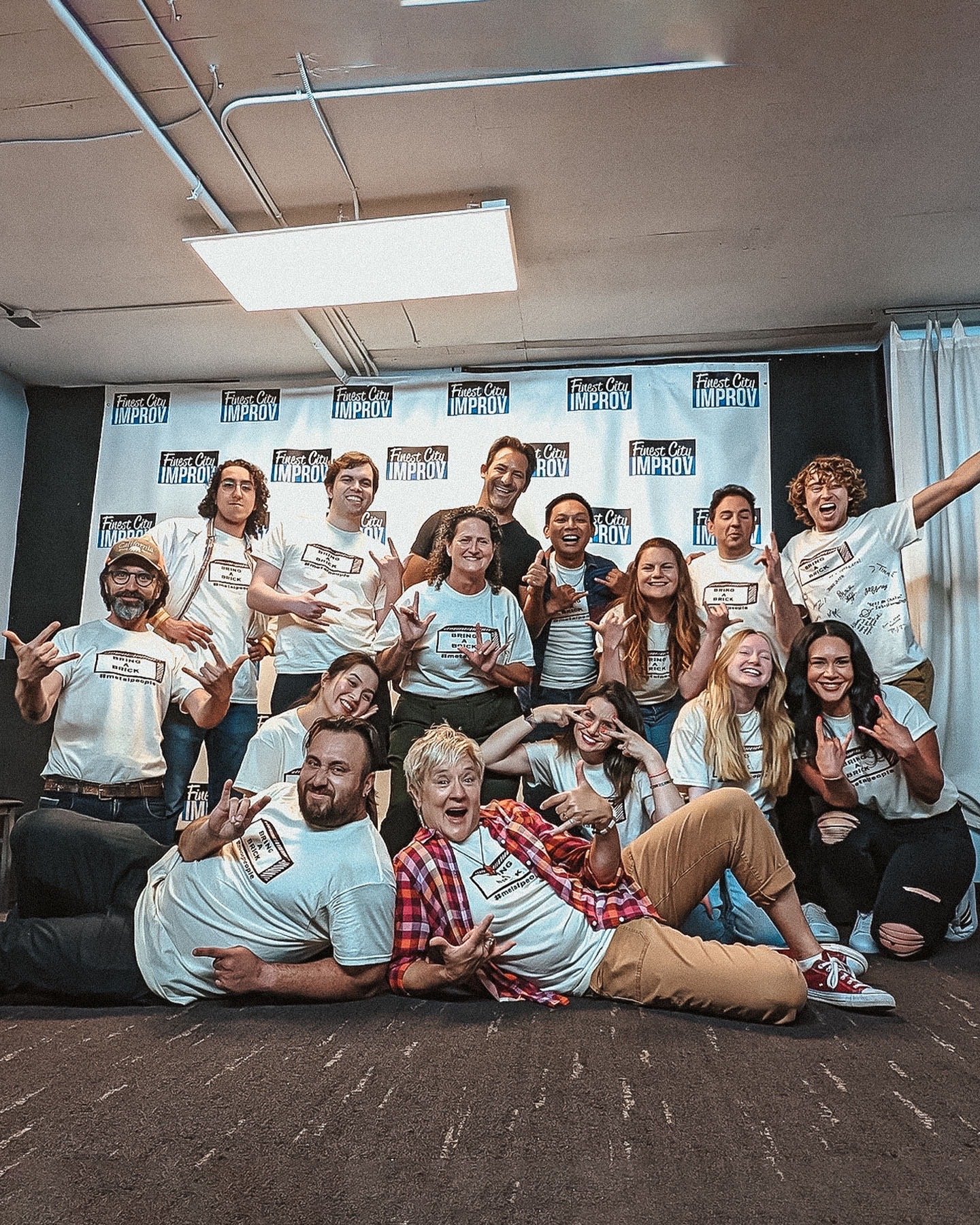
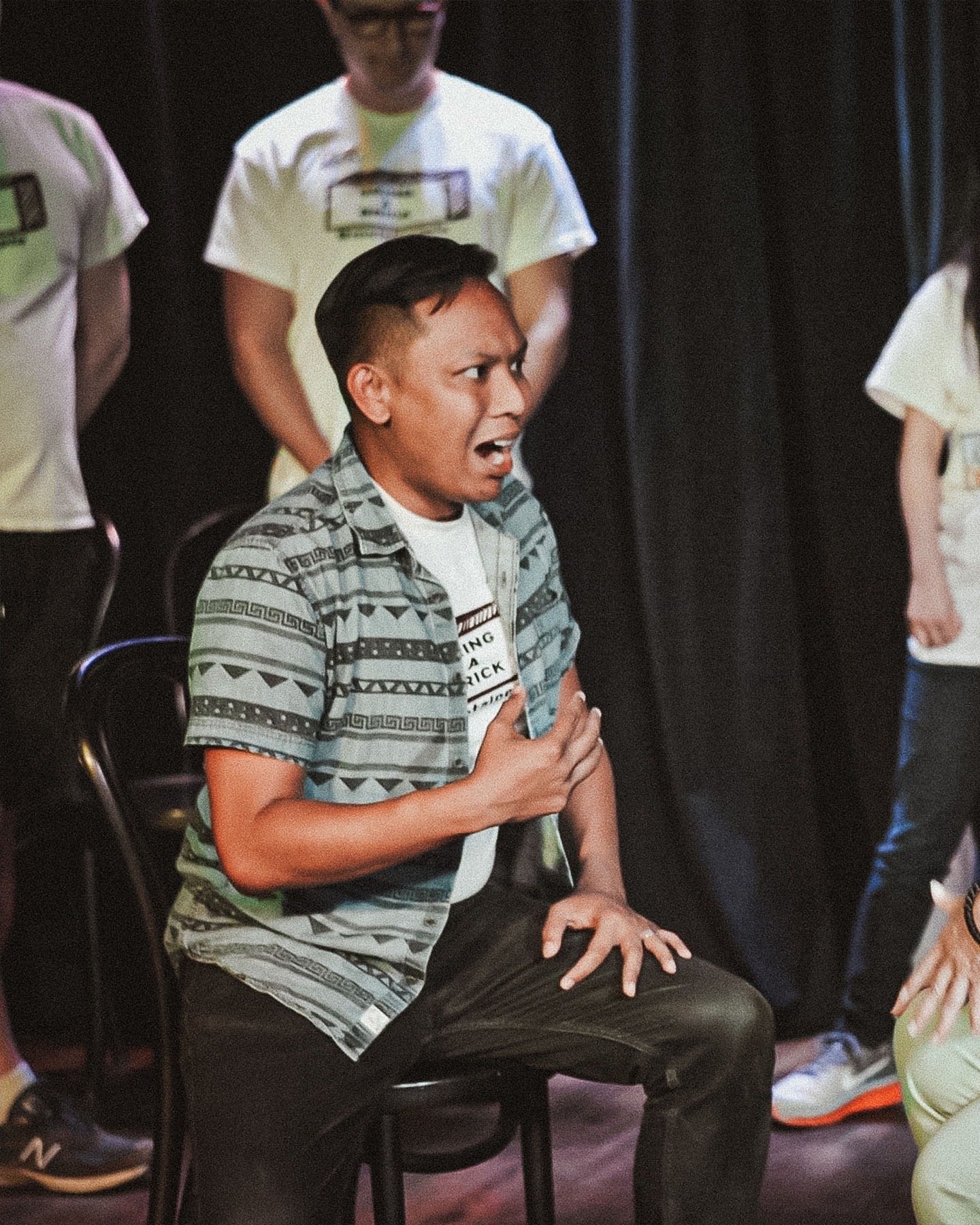
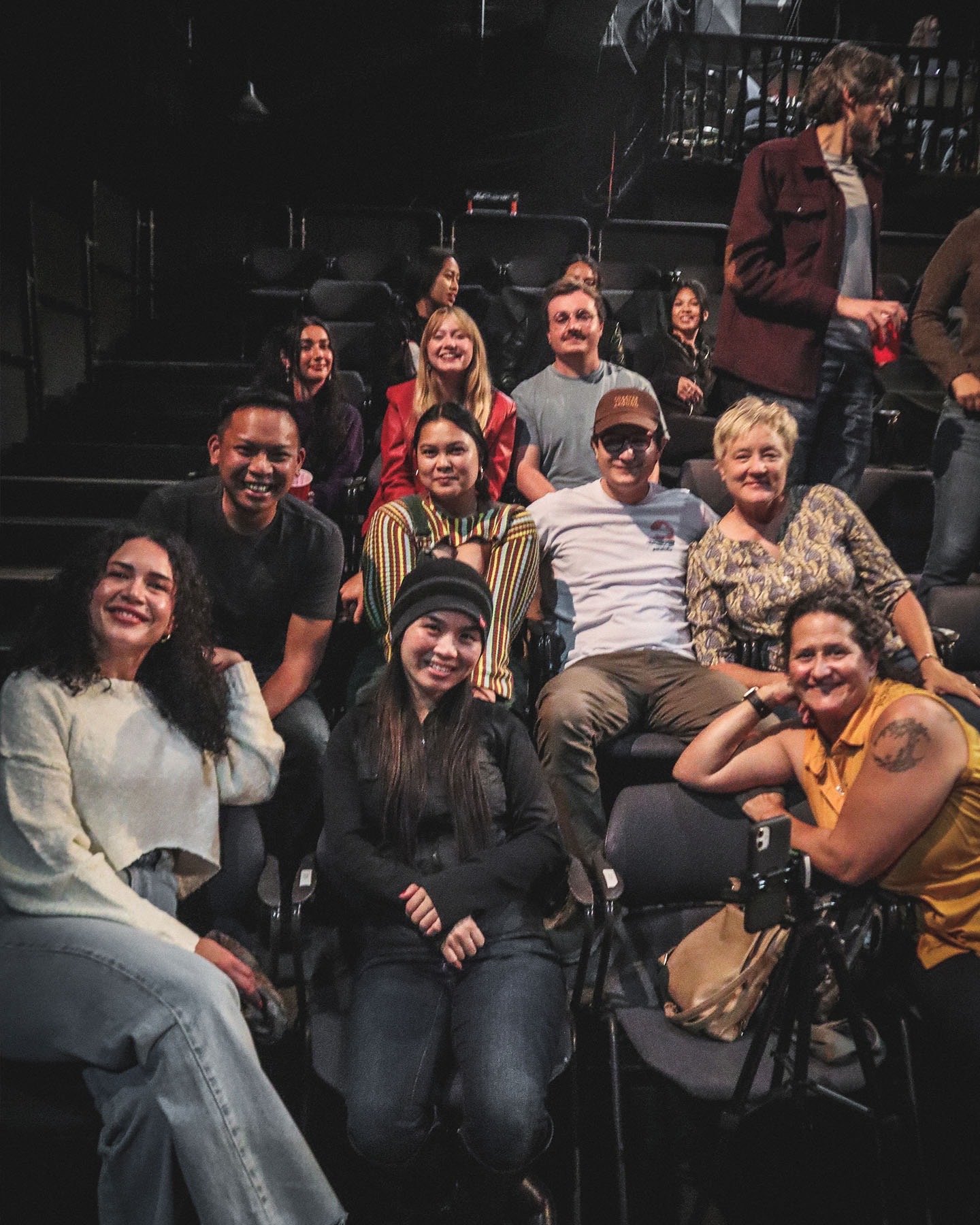
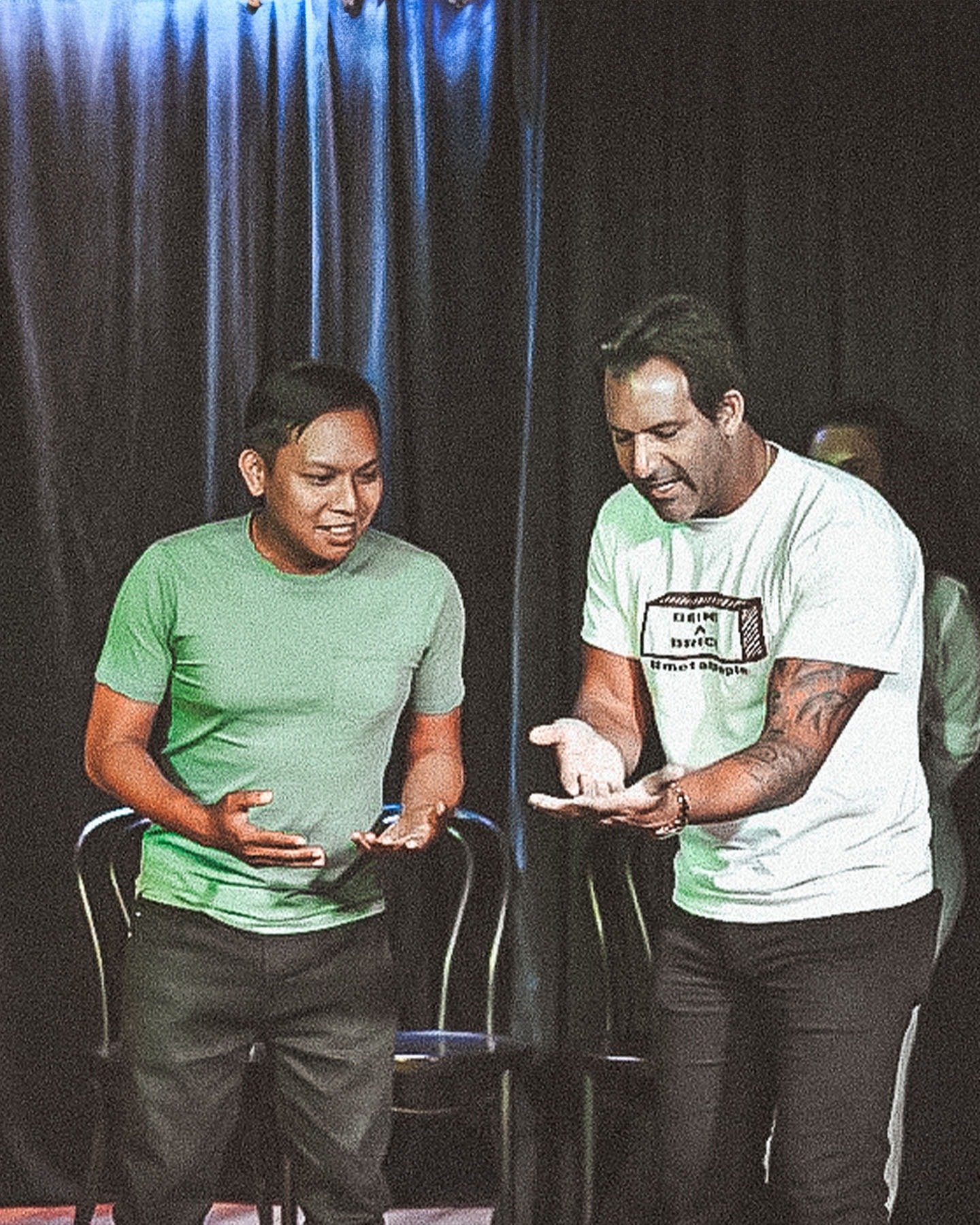
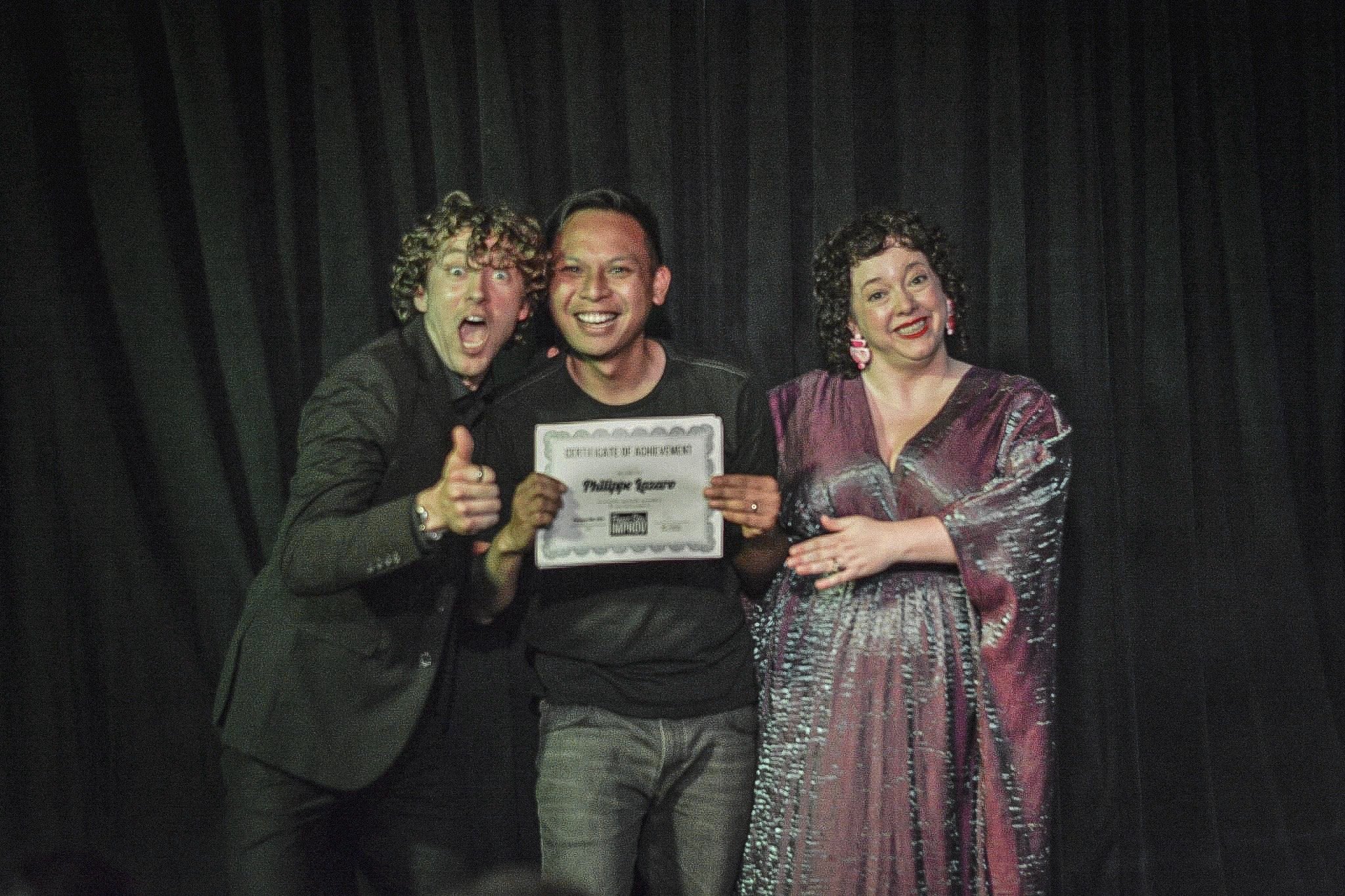
Improv is cool because you spend a lot of time pretending to be Daft Punk wanting to come clean about your identity, or a teenager wishing Kevin James was your dad, but also, it’s pretty good for you. Learning to have each other’s backs and be adaptable and all that.
If nothing else, it’s a more acceptable place for my smart-assery, so a year ago, I signed up for classes. Last night, my team had our graduation show!
Getting back into improv is something I had in mind for years. I loved doing it in high school & early college. But that was ages ago. Procrastination, pandemics, parenthood… you get it. But I’m lowkey grateful for the delays because it put me on the same track as my Metal People teammates. You make some great friends in the improv world and this squad exemplifies that.
We actually like each enough to be doing a bonus class as we launch as an indie team. We’ve got something like a half-dozen shows in the works over the next few months so stay tuned for some dates!
The Kolkata Mud Wrestlers
I’ve never wrestled. No high school wrestling. I didn’t even grow up with siblings to play wrestle.
So when the mud wrestlers of Kolkata, who do this thing every day as a physical and spiritual discipline invited me in the ring to go a few rounds, how do you suppose I did?
Niksat
“Niskat, an age-old practice in Ethiopia, should be thought of as a kind of body art like tattooing.
Young girls, particularly in the northern regions of Ethiopia such as Tigray, Gondar, and Gojjam, get Niksat drawn on their faces, necks, gums, and hands.”
–Getahun Asnake
When I encountered this woman in Amhara, I couldn’t resist complimenting her ink. You know how I am with tattoos in other cultural contexts. I love how so many different people around the world practice tattooing and have such diverse rituals and meanings around them.
For the most part, tattoos are religious in nature. Crosses are prominently featured. Necks are often decorated with intricate chain-like patterns.
It tends to be a more feminine tradition, as the most traditional tattoo artists were often older female. In the late 2000s, there was even a legendary tattoo artist in her mid-80s, who was something like the Apo Whang-Od of Ethiopia. In some regions, its mostly women who get tattooed, while in others both men and women are decorated.
Ben Schwartz
Got to see Ben Schwartz & friends play live at the Civic Center the other week. Fantastic show.
Hold space for pain, not blame
It’s been a really intense time in our world for the past few years.
A podcast I was listening to yesterday talked about how global conflict is at an 80 year high. Unless you’re quite old, you’ve never lived through a time where so much of the world was engaged in a war of some sort.
It’s a challenging thing to accept because in many ways my lifetime has coincided with an unprecedented period of peace for humanity, but the past few years are a very unwelcome step backwards.
Palestine and Ukraine are the places that most people have been struck by, but we’ve got like 30 ongoing episodes of mass violence. Places like Armenia, Haiti, DRC, Ethiopia, Sudan are having really heated crises fly under the radar partly because of our own biases in what we pay attention too, but partly because I think we’re burnt out on keeping up with all this.
I’ve noticed a lot of people struggle to talk about these things and to process them. It’s hard for me too, and I essentially got degrees to do just that.
As difficult as it is to talk about these things, I think it’s important to keep trying to have the conversations.
The movie Zone of Interest is all about a father trying to build his family a dream home right next to a concentration camp at Auschwitz. I think trying to ignore everything going on and live our ordinary lives simply because we struggle to wrap our heads around things is kind of like that.
When we see images of violence and horror inflicted on totally vulnerable people, children… responding to it isn’t so much about having the right words. It’s about reaffirming our shared humanity.
I want to share two big observations I’ve made over the past few years, as I’ve tried not to look away from all that’s been happening,
I also want to share a couple of ways that’s impacted the posture I take when taking in all of these images and having conversations.
It basically comes down to resisting the blame game, and making space for people’s pain.
First of all, it’s very easy for conversations about war to be all about whose actions are justified because of what the other side has done before. One example:
Four years ago, it looked like things were really going to escalate when a U.S. drone attack killed one of the highest ranking Iranian officials.
There was a lot of talk, like, well, since you’ve done this, you’ve given us no choice to retaliate, but the U.S. was kind of like, the reason we did that was to retaliate against this other thing you’ve done, and this is kind of how things work when you have two powerful countries that are hostile but not at war.
If you were to trace all of the moves and counter-moves back throughout history, one of the most important dates you’d run into would be 1979. That was the year that a more fundamentalist regime took control of Iran and dozens of U.S. citizens were held hostage in that country for months. It was a really big deal, and as you see, it still impacts global relationships today.
One thing that strikes me as pretty interesting though is that 93% of Iran is below the age of 65. For the majority of Iranians, 1979 is either something that happened before they were born or while they were children.
From Gaza to Ukraine, if you pay attention to the rhetoric used to justify military actions, it’s usually a leader saying they’re trying to reset things to how they used to be. How they should still be. They appear to nationalism and nostalgia.
I remember one leader from Kenya, in response to the Russia-Ukraine conflict, saying that if the countries in Africa all decided to wage war in ofer to sort out getting each people group their rightful land back, the bloodshed would be unbelievable.
I understand people have a relationship with their land, and I get that this is of significance.
But as the Kenyan representative pointed out, our most urgent task is to find a peaceful way forward.
So what are you supposed to do, just concede to your opponents and let them walk all over you? I will say whole-heartedly that I don’t know. At the political level, how do you move in the direction of de escalation without jeopardizing your country’s safety or existence? I’m really glad it’s not on me to figure that out at a country level.
I do know that at the person-to-person communication evel, I can make sure the conversation is framed around the goal of building peace, rather than assigning blame.
The blame game is how these conflicts get passed from one generation to another, depriving the oncoming generations of more peace.
Conversations about our global conflicts are not abstract. They’re deeply personal. In many situations, people have ancestral ties to the groups of people under attack, and its a form of collective trauma to see that take place.
In other scenarios, people are just grieved to see all the ongoing violence and devastation on a regular basis. We’re not meant to take that in so steadily.
Because these conflicts are felt so deeply, we also need to remember to make room for people’s pain.
When we don’t make room for the pain, that really feeds and furthers the cycle of blame. When people feel as though their experiences, anxieties, or traumas are being seen by the world around them, it creates a stronger need to assert that anger.
More often than not, it turns into two sides trying to justify, rationalize, or downplay the pain felt by each other, rather than simply recognizing hurt where it exists.
I’m convinced that making space for the pain other people are experiencing, and the hurt and uncertainty that are in their worlds is one of the most radical re-humanizing choices we can make in our world today.
It’s easy to feel like much of our world and our conversation is basically a constant shouting match. But everybody has some sort of a rationale to what they do, even if it’s nothing we’d consider rational.
I don’t think everyone is in position to do this every time, but I really think there’s something to those times that I see somebody who I’m opposed to in many ways, but I recognize the hurt or the fear that drives their choices.
It’s been a tough time for our world. Let’s give each other the space to simply lament that before rejoining that never-ending shouting match. And when we do talk and share the experience with others, let’s make sure to remember, it’s not about trying to win the blame game. It’s trying to make it so the atrocities we witness today don’t keep repeating themselves tomorrow.
My Taste in Fours
There was this little game going around Threads a couple months ago and it was fun enough to adapt for over here.
My taste in four categories:
4 Films:
🎥 Big Hero 6
🎥 Arrival
🎥 Eternal Sunshine of the Spotless Mind
🎥 Before Sunrise
4 Series:
📺 Kim’s Convenience
📺 Ted Lasso
📺 Psych
📺 Maya and the Three
4 Music Artists
▶️ Sufjan Stevens
▶️ Gallant
▶️ Kendrick Lamar
▶️ Vampire Weekend
4 Books:
📖 Factfulness by Hans Rosling
📖 Pachinko by Min Jin Lee
📖 Braiding Sweetgrass by Robin Wall Kimmerer
📖 Gilead by Marilynne Robinson
Stuck in the Mud
Taking the back roads of Ethiopia during rainy season might just lead to getting stuck in the mud. Was it super inconvenient? Sure. Was getting unstuck an unforgettable image of the whole community having each other’s backs? Also yes.



